Georgia
So it begins, the first herping outing of the new year. Won’t be in California but instead I’m embarking on a drive down the east coast which will result in 19 days in South Central Georgia. There the main goal of the trip will be to try and find tiger, mole, and marbled salamanders, an eastern indigo, pine snake, canebreaks, and eastern diamondbacks. Those are what I would be most excited about finding though I am sure that most of those are unrealistic at this time of year or at the very least incredibly ambitious. At the very least since I haven’t been to Georgia before I am expecting to find a plethora of lifers.
January 29 (Day 1)
The trip begins. Having spent the first day getting to North Carolina, we spent our time searching for salamanders. As the Carolina Sand Hill Salamanders had just been diverged from the southern two-lined species, we had those and mud salamanders as our primary goal. We were rewarded early on with a gravid female sand hill.
/carSanWin21.jpg)
Apparently other locales contain sand hills with a more orange coloration and spots which make it more closely resemble a mud salamander, but I was still excited to have seen them at all. The second one spotted was a male.
/carSanWin211.jpg)
Males have a sort of whisker above their mouth which resembles a moustache and detects pheromones.
/carSanWin212.jpg)
We would see two more during the day but neither were photographed. The next species seen was a pair of southern dusky salamanders. I attempted to photograph a particular fiesty sub-adult and got no great identifying pictures but this is the best I got which highlights the red on top and speckles along the side. Later we saw an adult, but it was quickly returned to its habitat without takign the time to photograph the individual.
/souDusWin21.jpg)
A change in habitat led us to our one and only mud salamander of the day. It was a sub-adult and had poor colors lacking the traditional bright orange, but retained spots along its body and was quite pretty in the light.
/mudSalWin21.jpg)
With both our targets in the bag, we went to try our luck dip netting. I a nearby stream we managed to happen upon another salamander species. This one was a broken striped newt. In its adult amphibious stage, it was quite dark and had an aquatic, flat tail. Their name is derived from the fact that their back contains two rows of spots going the length of its body which appears to be a broken stripe.
/broStrWin21.jpg)
That being said, its underside was a bright white with dots along the length.
/broStrWin211.jpg)
Successful day 1! Both targets hit and four lifer salamanders.
January 30 (Day 2)
With temperatures starting off cool and rising to the low 60s, we thought it would be a great day to test our luck and look for an indigo. We quickly became familiar with the sandy, pine habitat which had plenty of gopher tortoise burrows spread throughout. Surprisingly, my first snake of the new year, and the only one of the day, happened to be an eastern hognose! Not the snake I expected to find, but one that I have been thinking about for a while. This one appeared to be young and a melanistic black individual. Here it is in-situ.
/easHogWin21.jpg)
Although, we intended to pick it up gently and see its full pattern, it ended up putting on its theatrics. Unfortunately, this included plenty of poop, a healthy dose of musk, and a freshly eaten, partially digested toad. Then it lay tongue out and still after its fit of spasms came to an end.
/easHogWin211.jpg)
With a watchful eye on us, it remained only a quarter turned back over and we let it win this battle. It was returned to where we found it to let it flip back over in peace.
/easHogWin212.jpg)
The rest of the day was quite the bust though we did stumble upon a slimy salamander.
/sliSalWin21.jpg)
Based on the locale we found it in, we identified it as an ocmulgee slimy salamander although there are 8 subspecies in Georgia and they are known to hybridize. The spots and grey coloration on this adult was beautiful.
/sliSalWin211.jpg)
Although less than we expected, all around not a bad day when you see two species you haven’t seen before. We are still early in this trip and I expect great things to come.
January 31 (Day 3)
On this warm, rainy day we got some much needed rest and slept in. Come the afternoon, a little break in the rain brought us out to flip some tin. Yielded us a pair of five-lined skinks and a massive broad-headed skink before the rain came pouring in.
Moving locations, the search went towards amphibians. There was hope that we would stumble upon any of the ambystoma (mole salamanders) which reside in the area, but our main focus was on frogs. We found spring peepers, leopard frogs, bullfrogs, cricket frogs, spade toads, southern toads, and ornate chorus frogs. My favorite were the ornate chorus frogs which we happened upon a pair, one tan and the other green. Unfortunately, the secretive gopher frog eluded us.
The excitement of the night came while wading shin deep through a swamp. With a chorus of frog calls coming from every direction, I noticed a large mass of scales off to my left. Called over my friend and began attempting to identify it. Brown coloration, black tail, and brown mark going from its eye to the jaw. By that point, it became obvious that we had a cottonmouth swimming alongside us!
/easCotWin21.jpg)
On dryer land it coiled up and posed quite nicely for us but refused to show off its white mouth.
/easCotWin211.jpg)
A tighter shot showing off its pit and the mark across the eye.
/easCotWin212.jpg)
As it seemed to be nearly four feet in length, it appeared to be an older individual. There was also a surprising amount of black on top obscuring the pattern. That could be indicative of old age or hybridization with southern population. A nice picture of its keeled black scales.
/easCotWin213.jpg)
Lastly, my best attempt at a macro headshot. Glad to have finally seen another cottonmouth after not being able to photograph my lifer one and a half years ago. With that, we followed the cottonmouth back into the swamp and continued our search for frogs.
February 3 (Day 6)
The first of February was a catch up day full of work and rest. Back at it on the second of february at which point all day was spet hiking for indigos to no avail. Unfortunately, the first skunk of the trip.
That brings us to the present day, the weather is a little warmer than the day before and the wind is down nearly 20 mph which hopefully means that the stiller air will allow the warmer temperatures to heat up the ground. With that in mind, another day was spent searching sandy pines hoping for the elusive indigo. Another day without a snake, but I did flip a little fence lizard!
/easFenWin21.jpg)
Awesome to see the turquoise as opposed to the blue underside of western fence lizards. It was also funny to see how much more comfortable the little guy was when it had something to clutch on to.
After the sun was set we went to the run off of a lake to dip net a bit. To my amazement we found some salamanders. Not just any salamanders but sirens! To my understanding these are lesser sirens, but I can’t personally rule out the possibility that they may be younger greater sirens. Sirens are salamanders that live in the mud which means their eyes are largly vestigial. Their head is shaped in a way which allows them to get through the mud and burrow with ease. They don’t have hind legs but instead have two tiny front legs with four toes that are used to crawl across the ground. Their big paddle tails propel them through the mud and water. My favorite feature are their large tree-like red external gills.
The first one was gorgeous!
/lesSirWin21.jpg)
The second one was still surprising!
/lesSirWin211.jpg)
And then they were four! The fourth one was the largest.
/lesSirWin212.jpg)
Exciting end to the night! Heres some footage of them walking.
/walkingSiren.gif)
More adventures to come! Hopefully as the weather turns warmer the snakes will come out.
February 7 (Day 10)
After a week of poor weather and abysmal luck spent hiking for indigos and cruising for amphibians it was tough to roll out of bed this morning. Sike! It’s always exciting to spend a day outdoors even if you don’t find any herps. In the past four days I have seen a bobcat, barred owl, and armadillo. As well as less exotic things including tons of possums, deer, rabbits, and scorpions. That being said, we were back on the board with a snake today!
/corSnaWin21.jpg)
A juvenile corn snake! A welcome sight to see and such a clean one at that. The red and orange coloration around the face was incredible. It also faded out to a cool grey as it approached the tail.
/corSnaWin211.jpg)
The orange spots above the head trended towards bands as the body widened.
/corSnaWin212.jpg)
Being a juvenile it had huge bug eyes which was really cute to see in this yearling.
/corSnaWin213.jpg)
One final photo showing off its smooth scales, gorgeous colors, and tiny size.
February 9 (Day 12)
After claps of thunder that shook my airbnb and the wrath of a heavy downpour it was time to take advantage of the first day of warm weather (ignoring yesterday when my buddy found not one but two indigos while I was stuck in class). In Georgia there is no shortage of tin to flip. Just need to make sure you don’t get killed for trying to flip it. With more spots than can be flipped in a day, or possibly in the remainder of our time in Georgia, we embarked to try out some that had not been tested yet.
The first spot seemed promising with plenty of tin in prime positions. It was only the fourth or so piece of tin that yielded our first snake! A gorgeous corn! This adult was quite healthy and easily above three feet in length. It was awesome to see this individual after seeing the juvenile the other day. It was quite patient with us and posed nicely.
/corSnaWin21.jpg)
In front of the dilapidated barn where it was flipped.
/tinSite.jpg)
Sites like that are all over Georgia which makes me thinks snakes are everywhere. No wonder there is such an abundance and diversity here. After that we moved further down the road to our second spot of the day. This one was more open and had less tin. Seemed to be more trash as we found tires, carpet, and the remains of a long-gone building. Under the first carpet flipped we found our second snake, a lifer, an Eastern Diamond-backed Rattlesnake!
/easDiaWin21.jpg)
That is how it was found, in-situ, under the carpet. Poor guy must have been cold.
/easDiaWin211.jpg)
This little guy was clean. Colored slightly olive green with some mustard yellow around the diamonds. The colors were much more vibrant than the western diamondbacks though I would attribute that to the more colorful environment.
/easDiaWin212.jpg)
Its black eyes were menacing. This little guy was no more than a foot and a half but had the heart to make you think twice. He was very defensive, watching our every move, rattling his button, and even struck once. I think that may have been the first rattlesnake I have seen strike. Which also goes to show how rare that is as I have seen a significant amount.
/easDiaWin213.jpg)
No in-situ for the second one, but it was found between some tin in an open field not far from the first. Similar patterns but a bit less vibrant of a yellow. Could have been siblings.
/easDiaWin214.jpg)
It flattened itself to the ground to appear bigger and was just as twitchy as the first. It also struck once.
/easDiaWin215.jpg)
When it wasn’t so calm and coiled, it was trying to pretend it was a bigger snake with more strike radius. It would coil just a little behind the head and slowly slither towards us threateningly. Unfortunately, it was just a little guy so it was more cute than scary. Aside from a handful of slimy salamanders, that was all that was seen on the day.
During this trip my photography skills have improved immensly. I am really learning how to take photos with this macro. Expect more of these to come as I continue to improve.
/cornSnakeScales.jpg)
/easternDiamondbackScales.jpg)
Out to flip more tomorrow!
February 10 (Day 13)
A full day of flipping in warm weather and we only saw one snake. A little surprising but always glad to see something. It was another healthy corn snake. These guys must like the current conditions at this point in the year.
/corSnaWin21.jpg)
This guy had some reduced black in its pattern.
/corSnaWin211.jpg)
/corSnaWin212.jpg)
Interesting orange coloration on the scales right below the eye.
/corSnaWin213.jpg)
It was a pretty one! Going to have to add corn snakes to the list of snakes I will always be excited to see!
February 12 (Day 15)
While a day off was taken, the rain was productive! Spadefoot Toads were out and breeding in quantities I had never seen before. They were everywhere, in the streets, ditches, and in flooded farmfields. The air was thick with their calls and that of southern toads. Much more of a snake and salamander guy but I took the opportunity to get some photos of these toads. The yellow in their eyes is incredible!
/spadefootToadEye.jpg)
Tin flipping was the plan for the day, headed further south in search of a canebrake. Always looking for kingsnakes too! Seems as though snakes in Georgia like to sleep in, have yet to find one too early in the day. Seems as though we are finding the first one around the afternoon everyday. Pretty poor luck in the first half of the day. The first snake actually came between flip sites. Drove by a rotting log that was sitting in the sun and peaked under the bark to find a scarlet king snake!
/scaKinWin21.jpg)
Only the second one I had ever seen and a gorgeous one at that. Interesting how it had black on its head and cream coloration as opposed to white. It was also on the smaller side.
/scaKinWin211.jpg)
Peaked under some more bark and saw another one disappearing into the base of the tree, but I let that one be. Must have been ideal conditions to see two in the same tree.
Continued with flipping after that and the very next site had our next snake. It was a canebrake!
/canRatWin21.jpg)
I was incredibly excited to see my first timber rattlesnake and my 50th lifer snake species. While some people may say it was an ugly timber I loved it! May have to do with me being a rattlesnake (crot) guy.
/canRatWin211.jpg)
This one was browner than others I have seen photos of and had the awesome darker colors running down the length of its back.
/canRatWin214.jpg)
Very excited to see the canebrake and it made for a very successful day.
Tried to get more scale photos but had some issues due to the smaller size of the scarlet king and the angry nature of this particular canebrake.
/scaKinScales.jpg)
/canRatScales.jpg)
February 14 (Day 17)
With the warm rains, we decided to drive south towards warmer weather and camp for a couple days. With a noticeable boost in temperature and some sprinkling rain on the way down, we arrived just in time to cruise the first night. The night started off explosively as the sun had just set and in the first thirty minutes we found four corn snakes and a florida green watersnake.
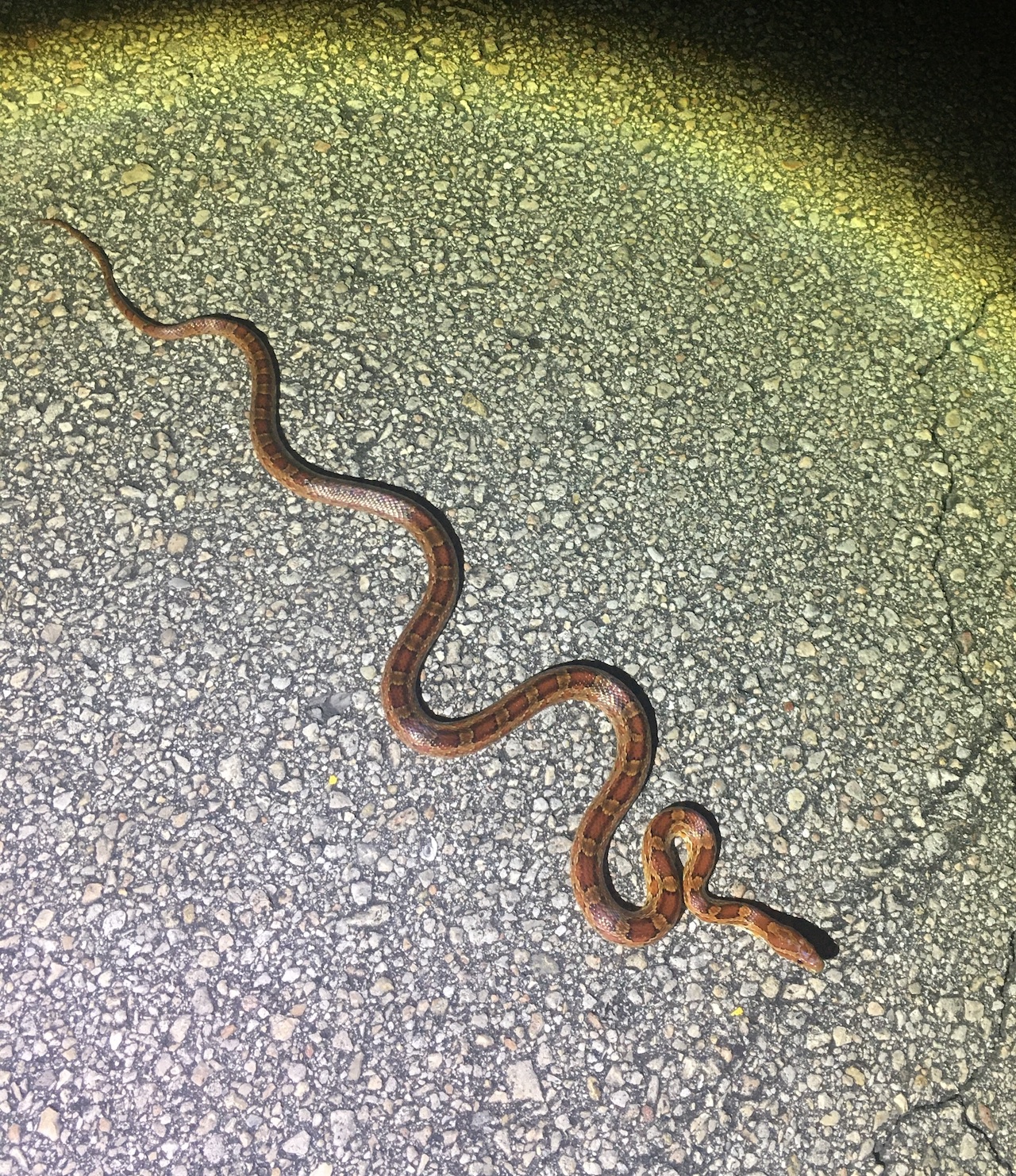
Between the apparent commonness of cornsnakes down there and the constant pressure to keep cruising while temperatures are good, we didn’t stop to take pictures. Most cruising pictures will be taken on my iPhone. After that brief explosion of activity, things quited back down for a while. The next two snakes came in close succsession. The first was my lifer peninsula ribbon snake. These are very thin garter-like snakes.
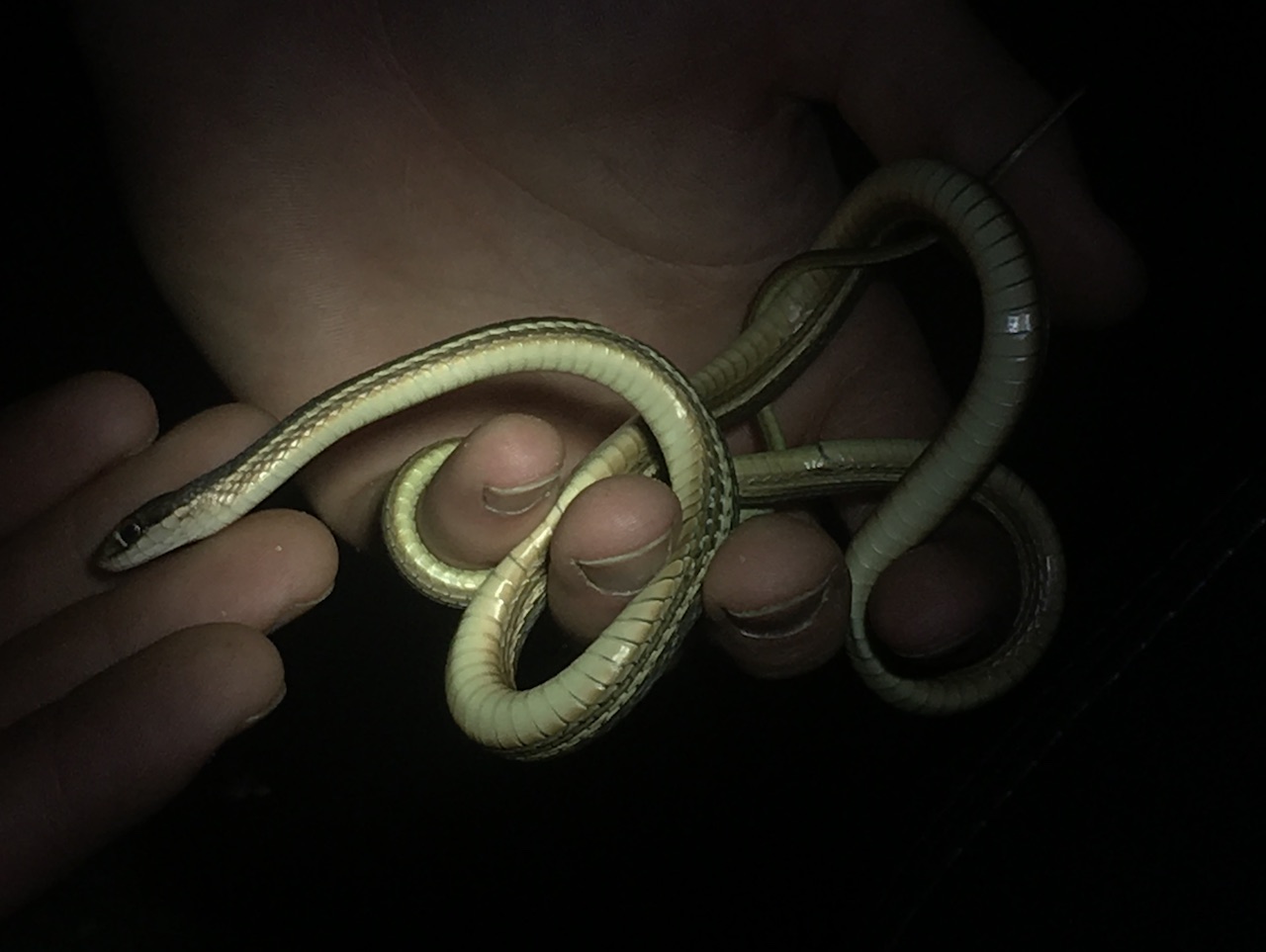
Surprise surprise, the next snake was an eastern garter. No pictures of that. After that we crusied for a couple more hours but activity seemed to be dead. Towards the end of the night we found some rocks to shine and activity picked up immediately. There were snakes in the water, on the rocks, and even on the crawl. We were only there for an hour but snakes were everywhere. It started with a florida green in the water, a brown watersnake basking on the rocks, two cornsnakes on the crawl, a scarlet kingsnake on the crawl, and then a final florida green in the water. Only the florida green and scarlet king where photographed that night.
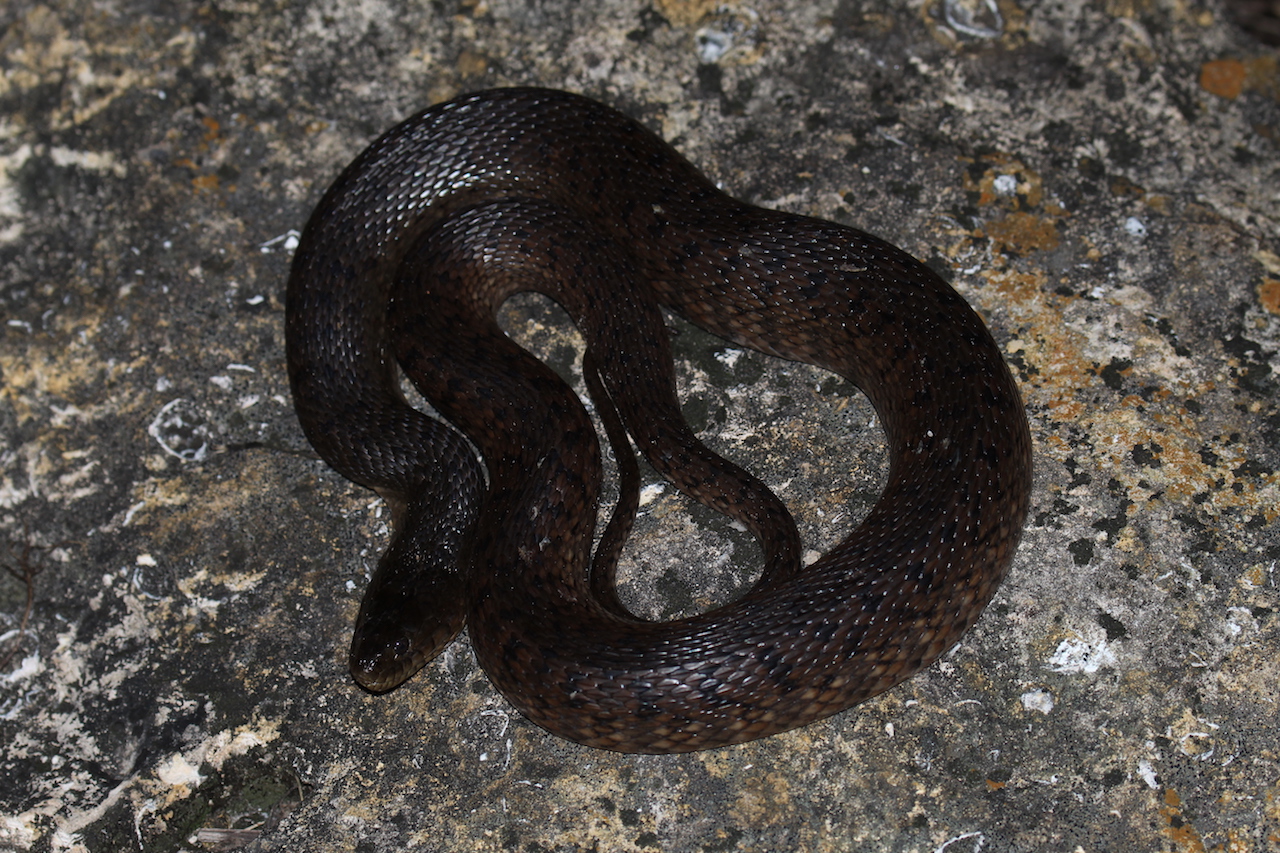
I wasn’t used to taking photos in the night nor dealing with all the bugs after all the day time photos I have been taking. Unfortunate because I would have loved a shot of the florida greens head.

So crazy to see one of these guys on the crawl! It had some nice colors, more white than the ones up north and less black on the head.
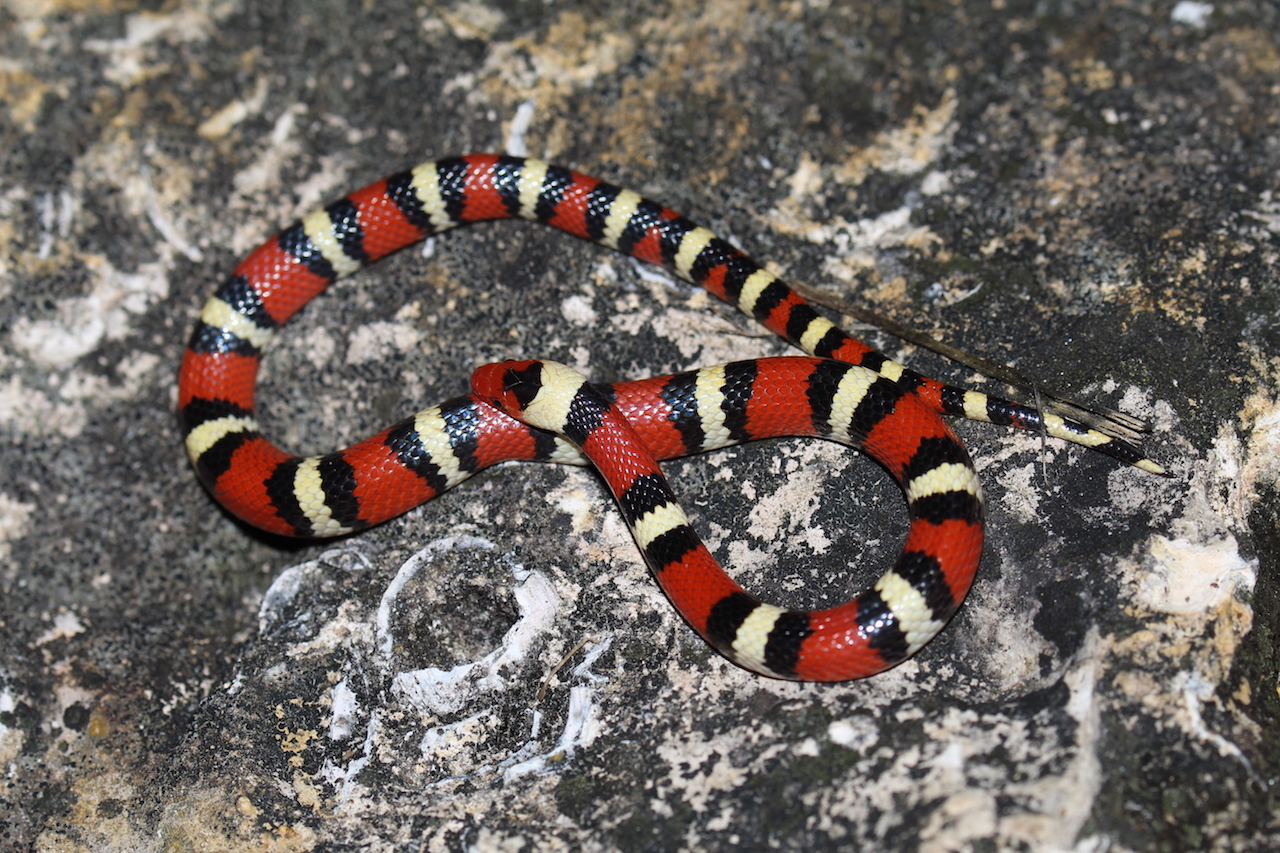
Wish it wasn’t so buggy, I would have been able to get better photos. We ended the night with a small musk turtle.
February 15 (Day 18)
Full day in the warmer weather means a morning of hiking, crusining at dusk, and shining during the nighttime. Bound to find something. The morning started off pretty slow, taunted by the sound of a racer slithering away but no visual sightings of snakes. We did see a pair of alligators though.

Cruising around some sand roads in the height of the day saw nothing more than a crossing racer, southern box turtle, and a some sort of slider.
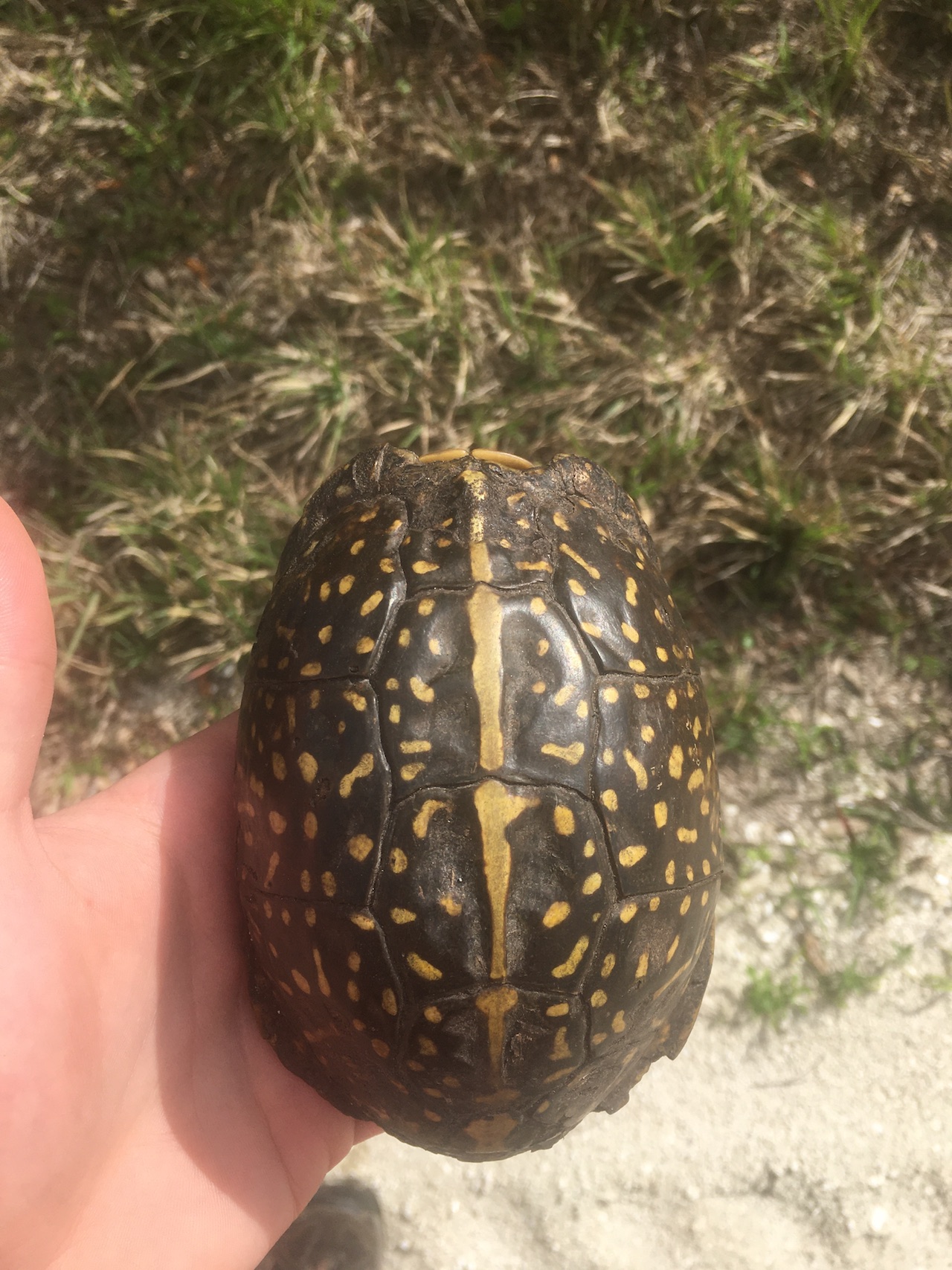
Took a break in the true heat of the day and had lunch, but went back at it after. Went hiking around a tree line next a little swamp. Saw a racer moving under a clearing under an oak tree and into a grass field. Near the end of the hike we stumbled upon a pair of yellow ratsnakes hanging out on/in a log. A juvenile was crawling around on top and ducked in a hole before we could get to it. A massive and gorgeous adult was sitting on the edge of a hole.
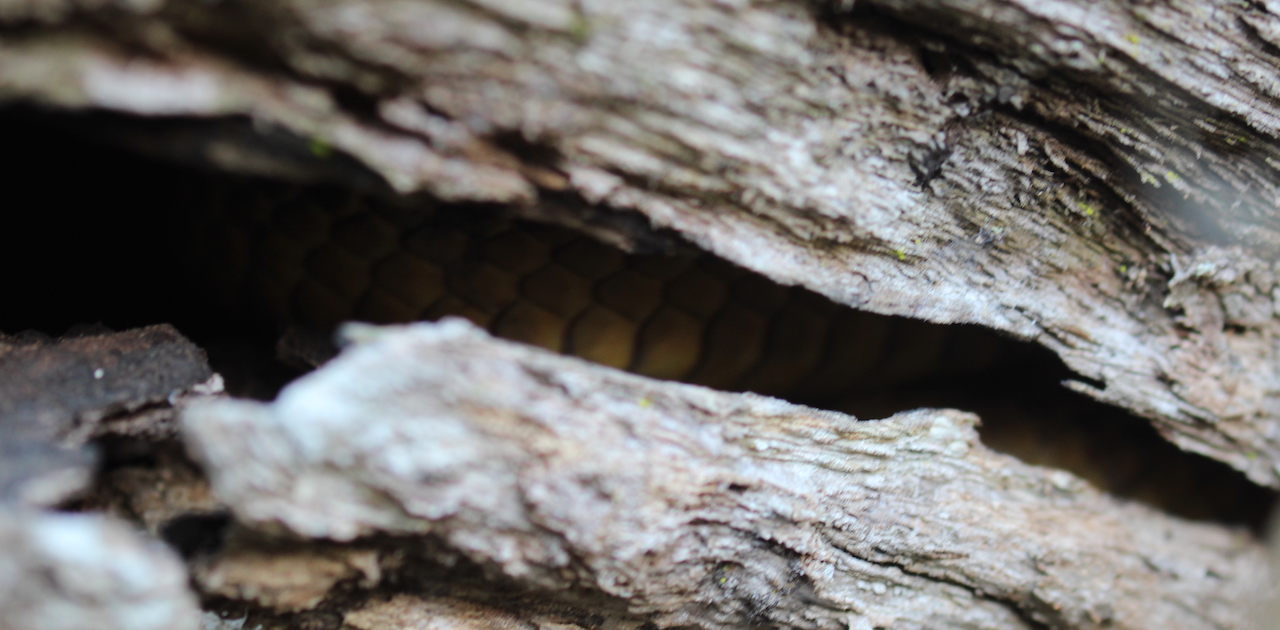
Let it be and unfortunately didn’t get a better photo of it. I saw it’s face and the gorgeous yellow on it, but all the photo got was it’s scales.
As the weather began to die down it was time to hope back in the car and cruise. Almost immediately another peninsula ribbon was found crossing the road. Moved it across and continued on our way. As dusk was nearing we found a shiny little snake in the road. To my surprise, it was a striped crayfish snake!
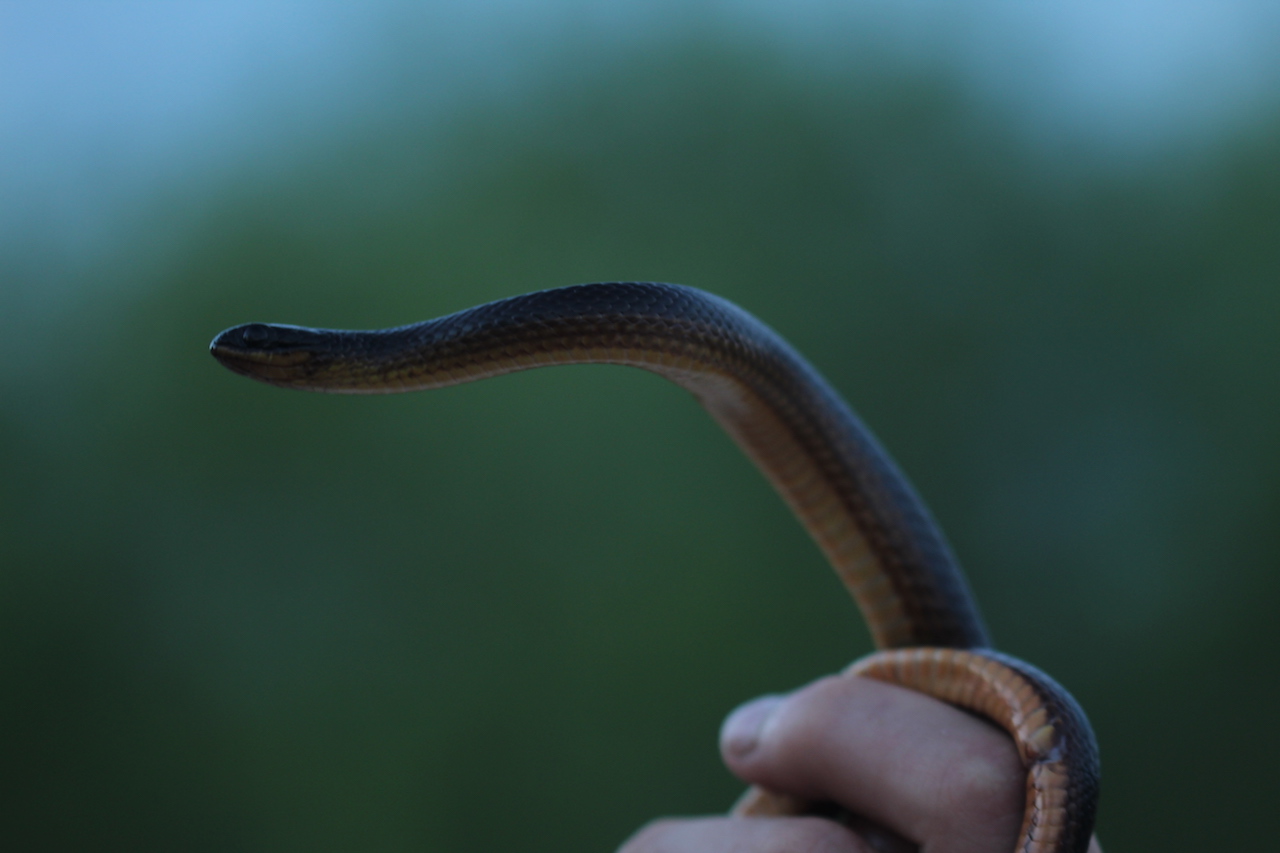
This is definetely one that I was blown away to see. Not because it was necessarily an uncommon or amazing snake but because I had no expectations to see one. Wish I would have got more photos of it. Here is its underside.
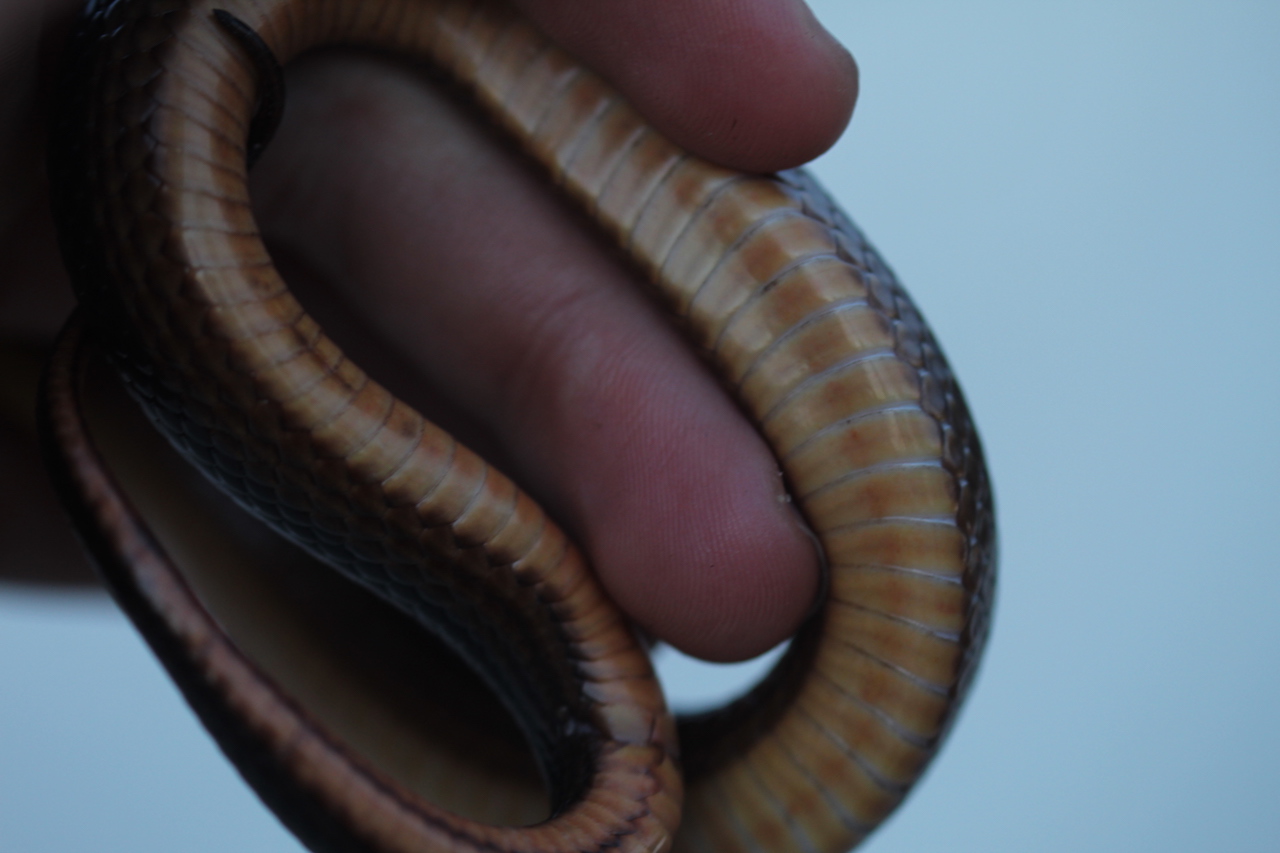
Back on the road quickly as we were in the golden window of dusk. Another corn and eastern garter in the window. As common as the corns are down here, I really appreciate their color. They are awesome. Again, we cruised well past the optimal time and saw little activity before moving to shining. Another brown watersnake in the rocks but otherwise much less activity than the night before. Surprisngly, we cruised a banded watersnake on the way back to th campsite.
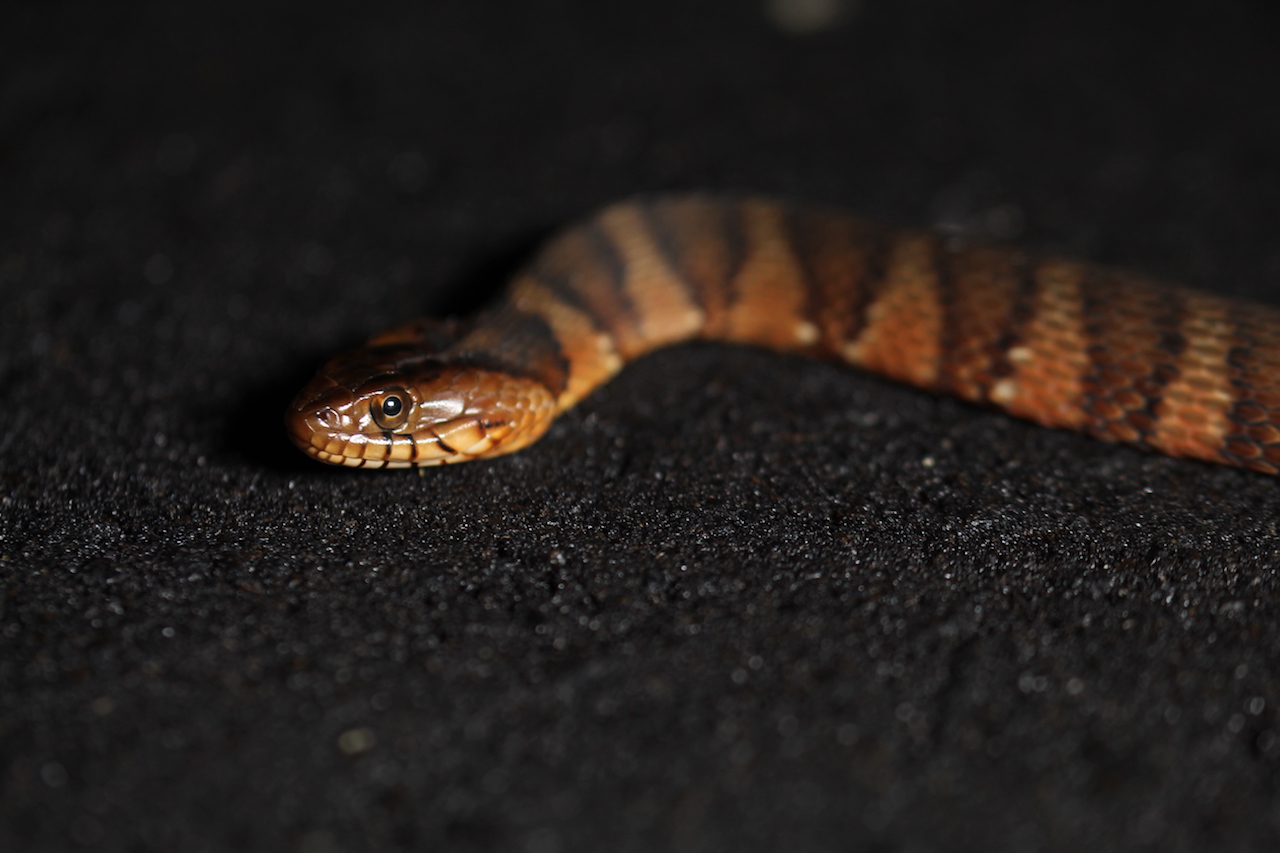
February 16 (Day 19)
The last day in warm weather we focused on cruising. It seemed as though the focus was on smaller objects and mostly trash. It was a pretty slow but consistent day, pretty much finding a snake every hour, but it was grueling in the heat. Started off flipping a racer. It was my first chance at photographing one as it was very cooperative.
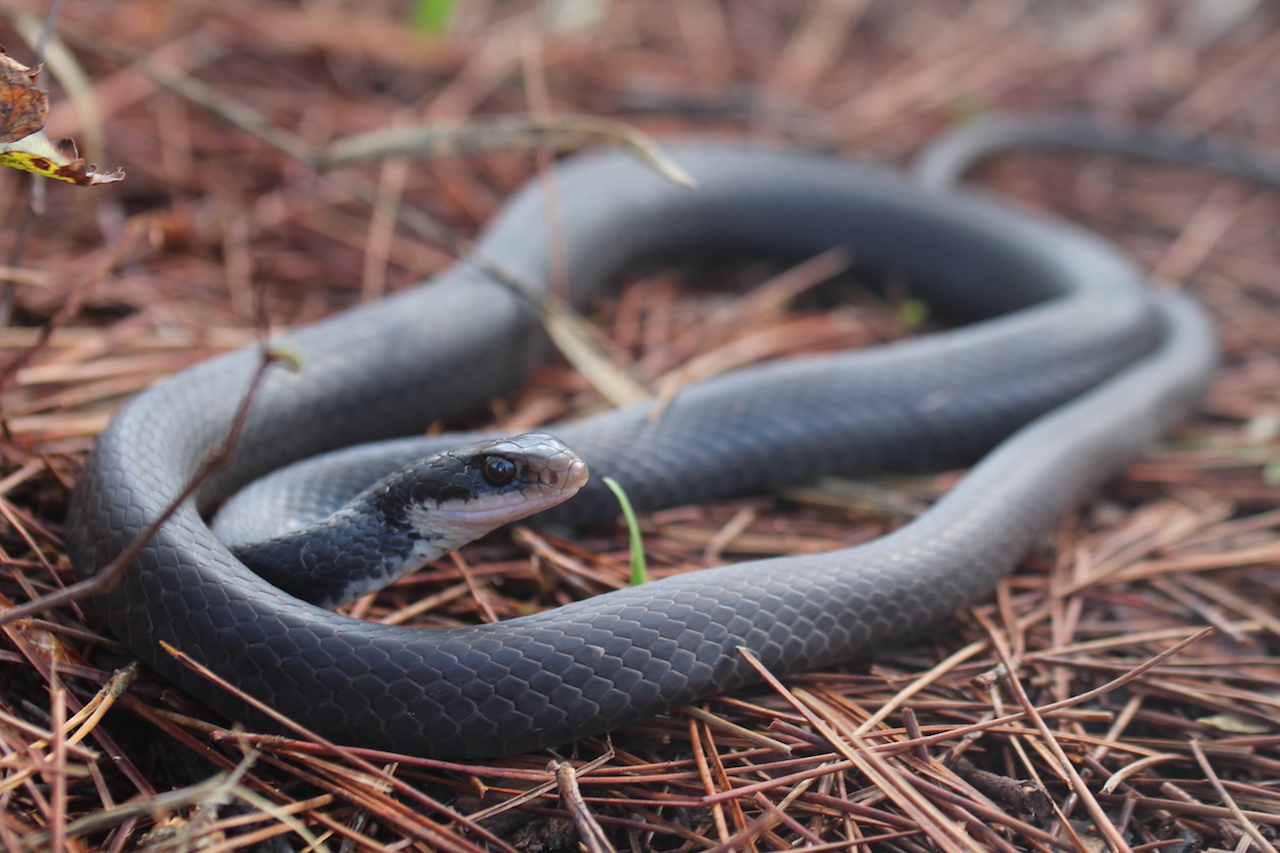
As the day warmed up we moved to smaller snakes. The next one found was a southern ring neck. These guys have a lot less vibrant colors than their western counterparts but still cool nonetheless. Some ground objects for scale as it hid its head.
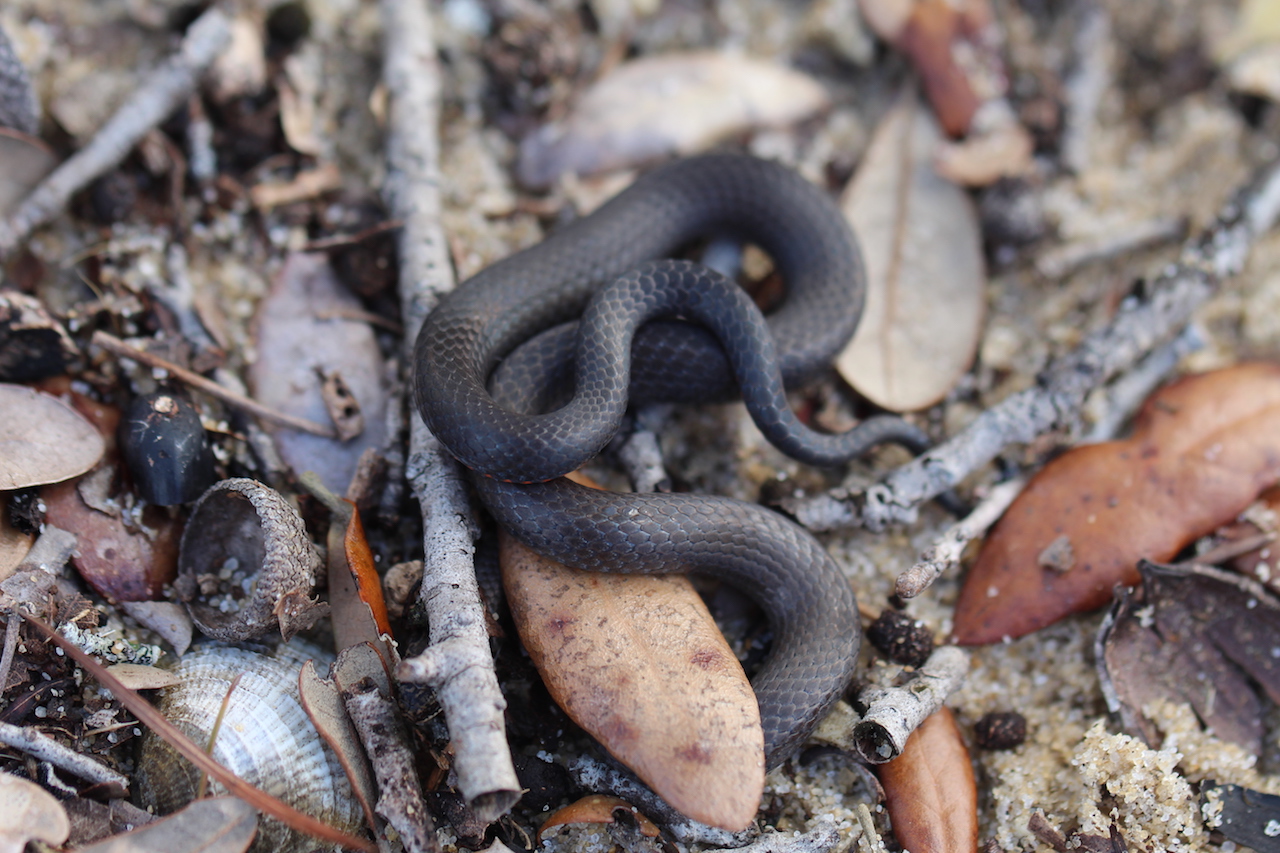
Its incredibly vibrant tail.
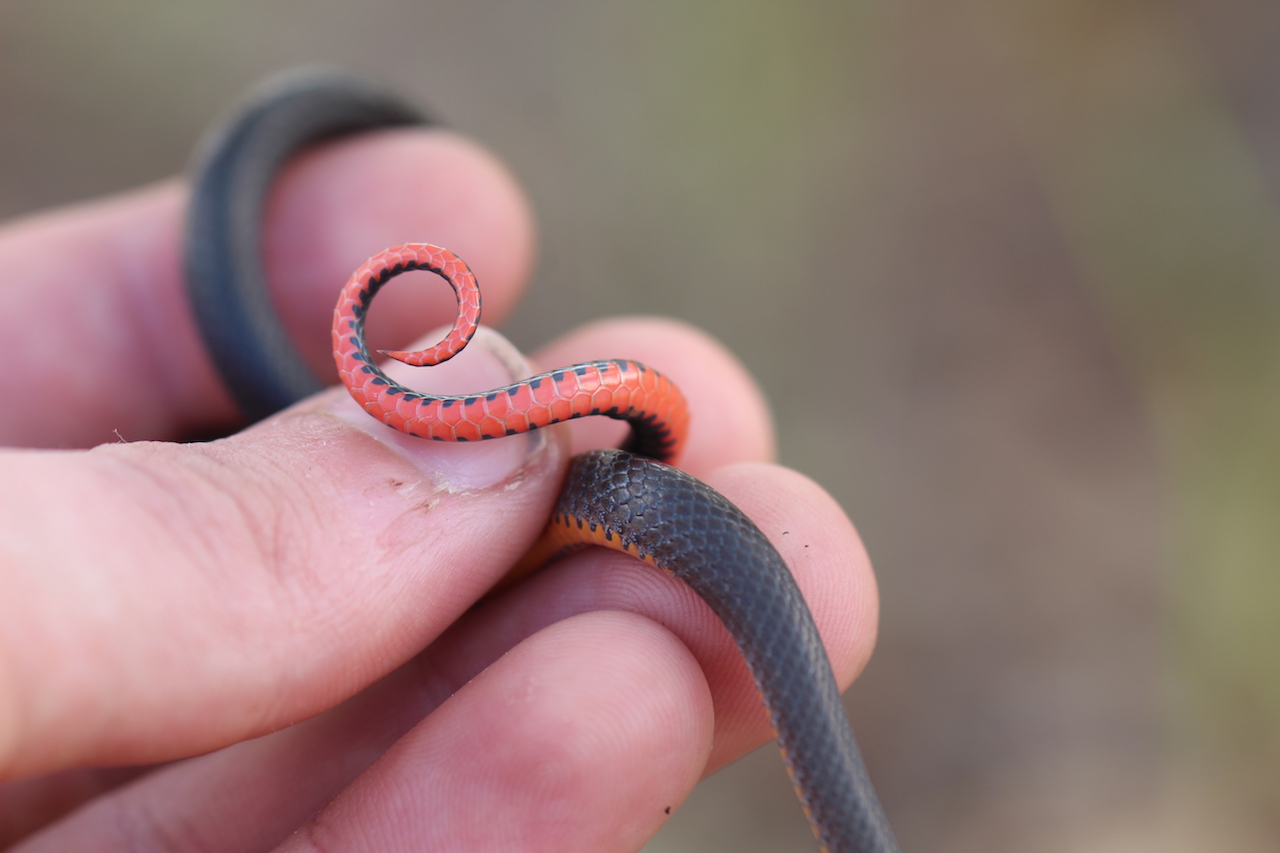
The best full body shot I could get while this guy was so squirmy.
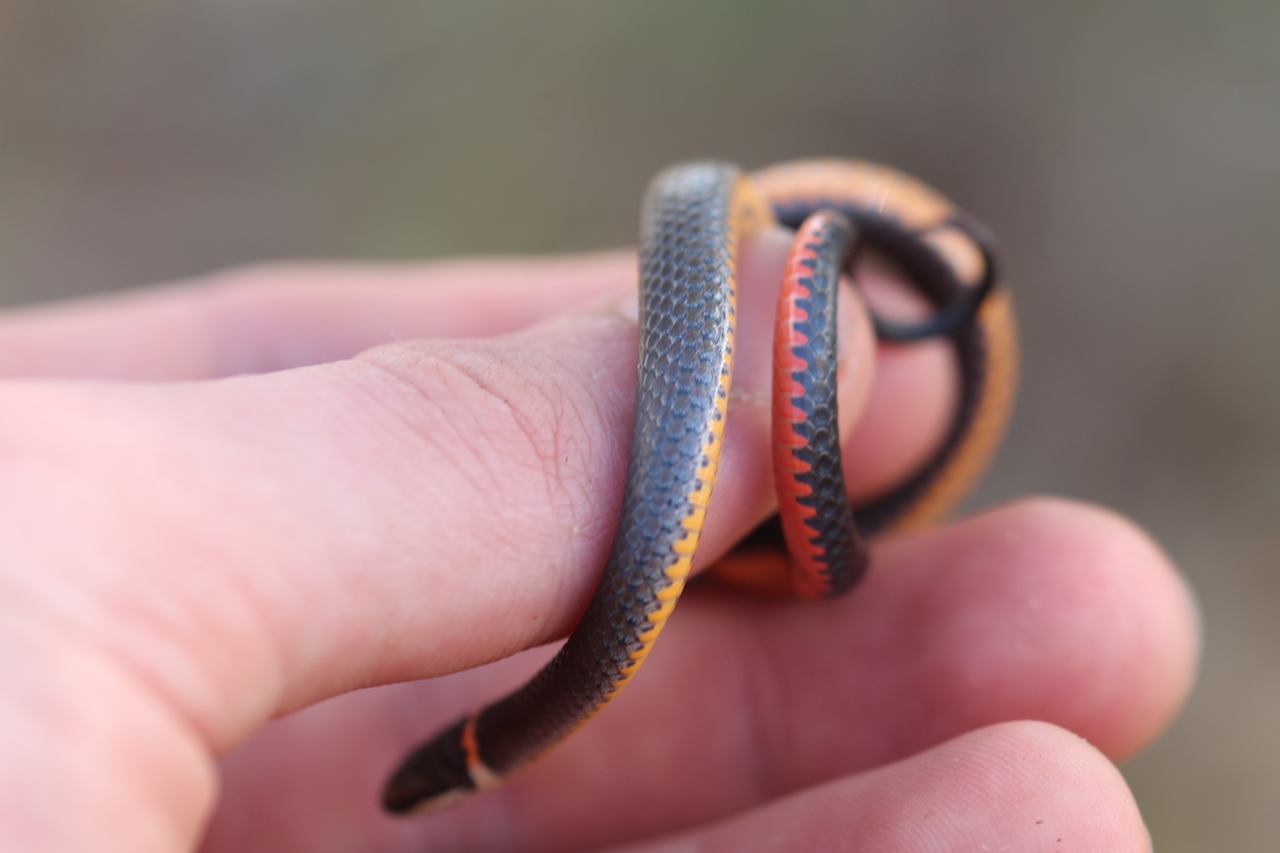
Pretty soon after that I flipped an invasive Brahminy blindsnake. The first one of these I’ve ever seen. I was fascinated and surprised to see the pointed tail on this little flower pot snake. Pictures didn’t turn out too well as it was quite bright.
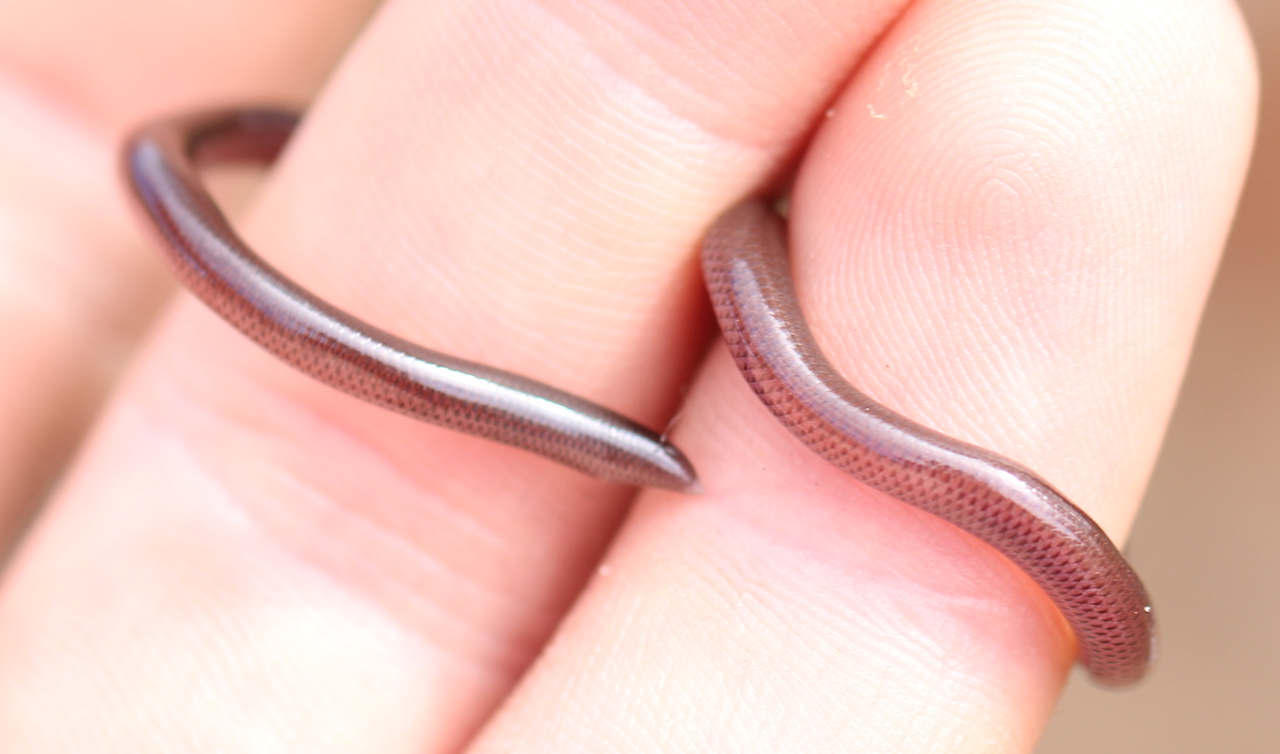
We saw another racer crossing the road in front of the car as we were moving locations. Finally, I got to see the animal responsible for the holes that litter the fields down here. I saw a pair of gopher tortoises. The first one was on the crawl so I snapped a quick picture, but the second was toasty right outside of its hole so I didn’t bother it.
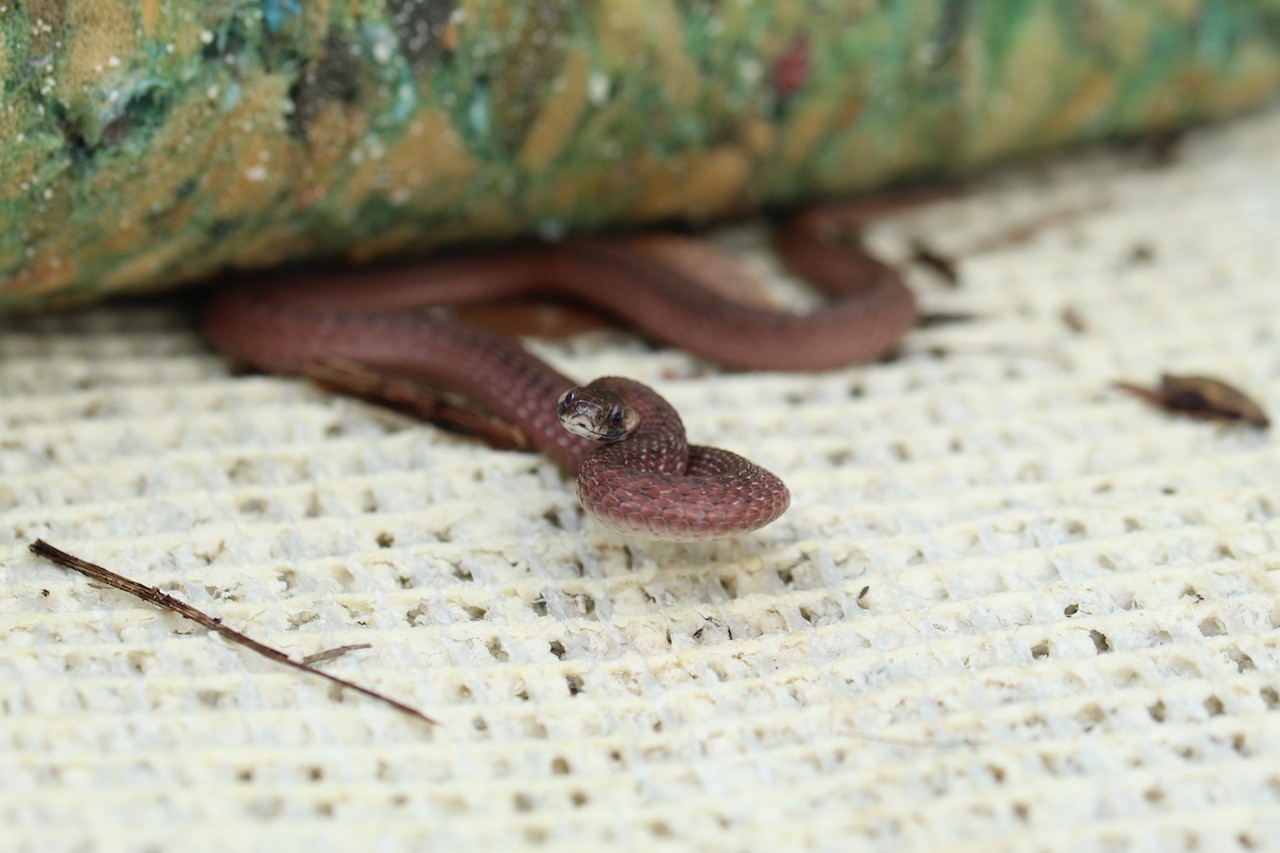
The target of the day came late, found as the heat was beginning to get to us. We stumbled upon an eastern coral!
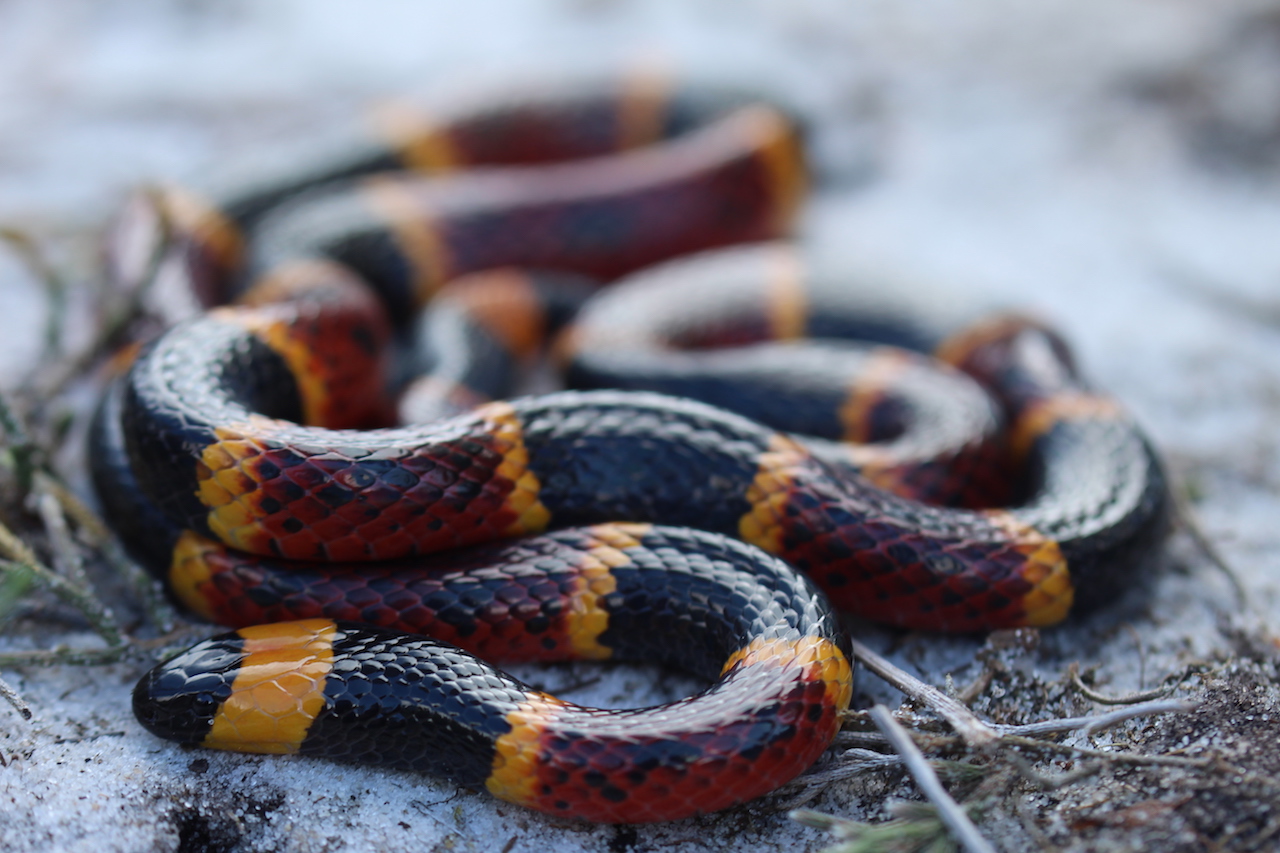
What a gorgeous snakes! Don’t quite see the resemblance to scarlet kings, but it may just be the individuals I have seen thus far.
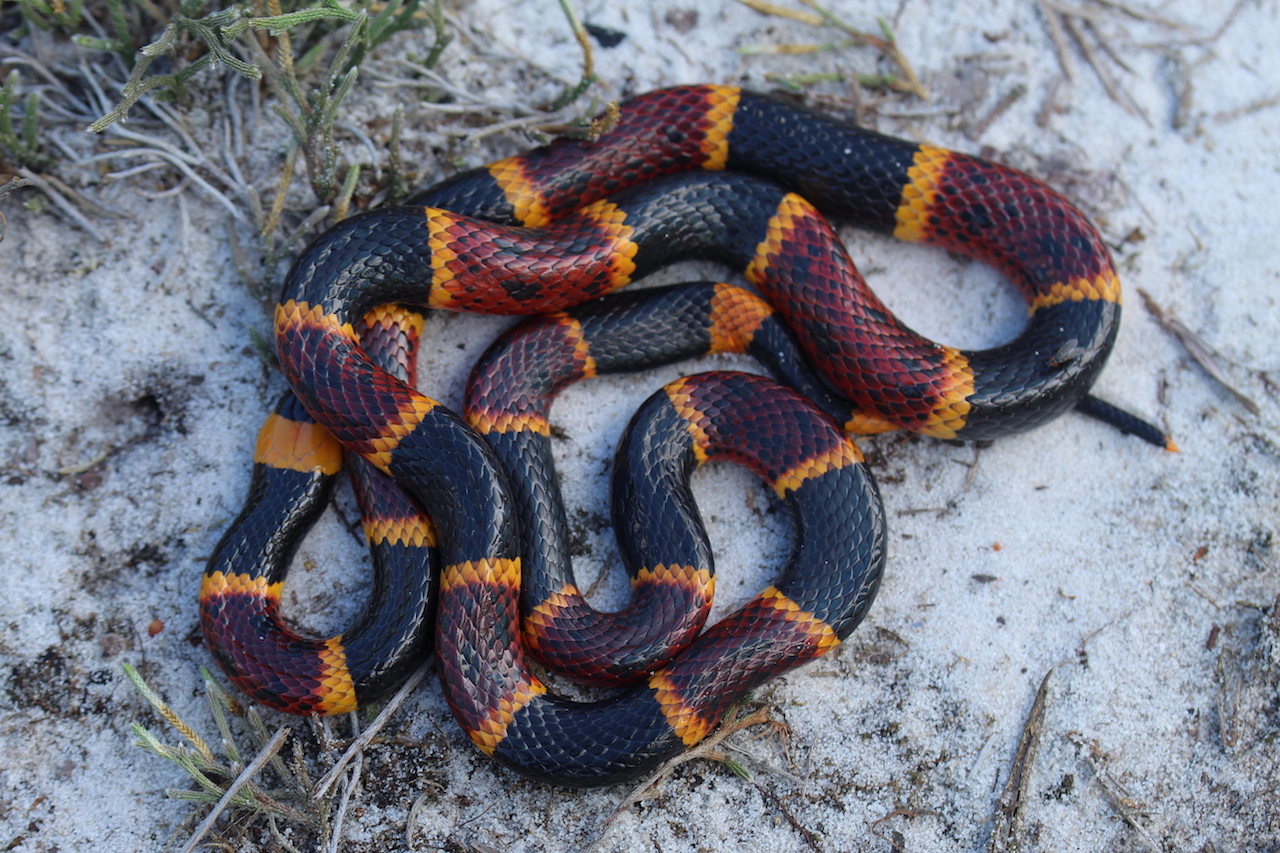
The head of these guys reminds me of an indigo. They definetely have a different feel than most snakes as they are the only elapids of North America.

The day wasn’t over though. So continue on we will, just one more flipsite to hit. Yielded another corn! This guy was pretty big and was about to experience a little photoshoot before a larger than six foot coachwhip was flipped!
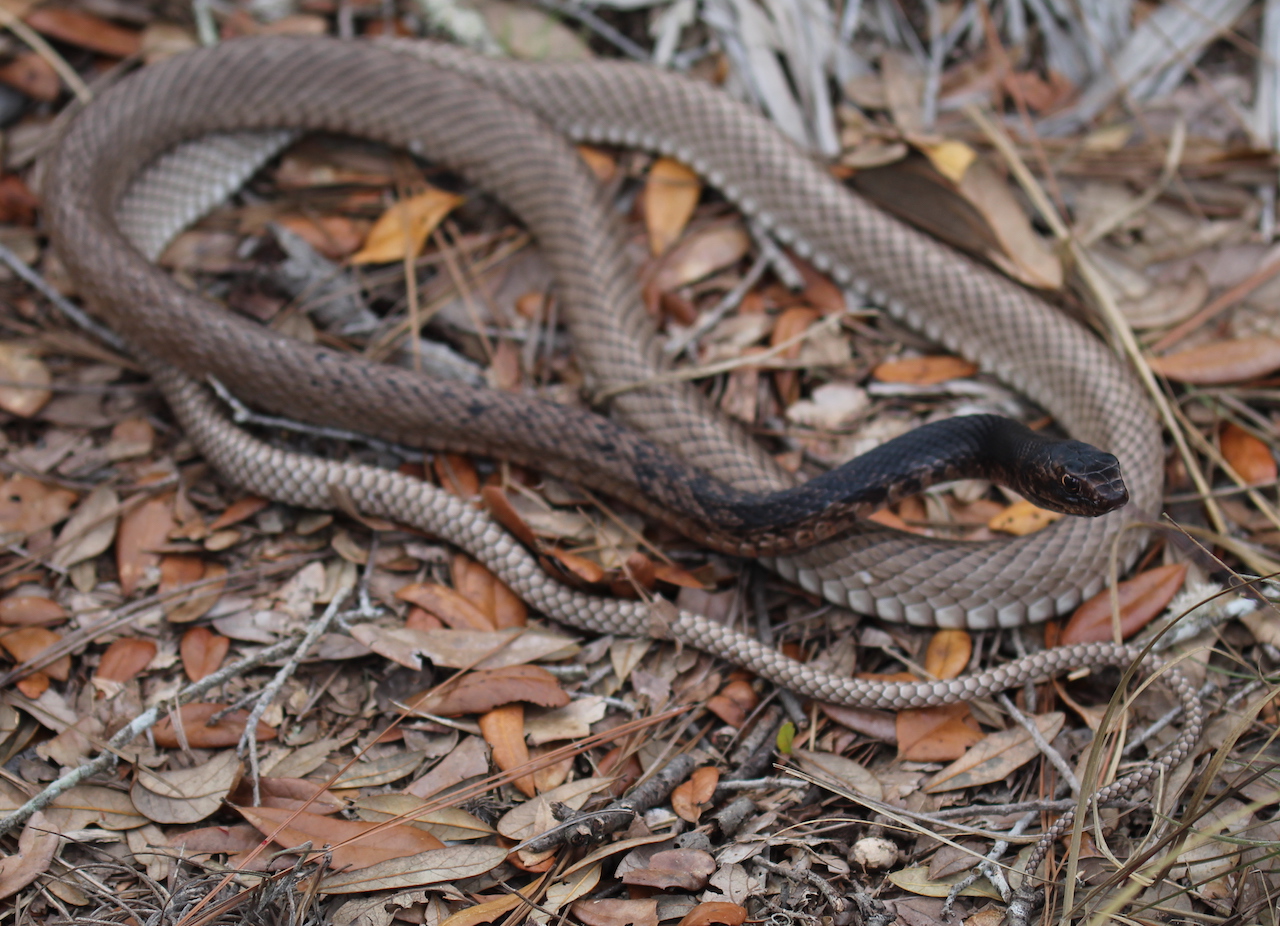
Very cool snake. The darker head was awesome. It seemed so intelligent as it watched us. Also very cooperative. A gentle finger lifted its head and it remained posed for our photos.
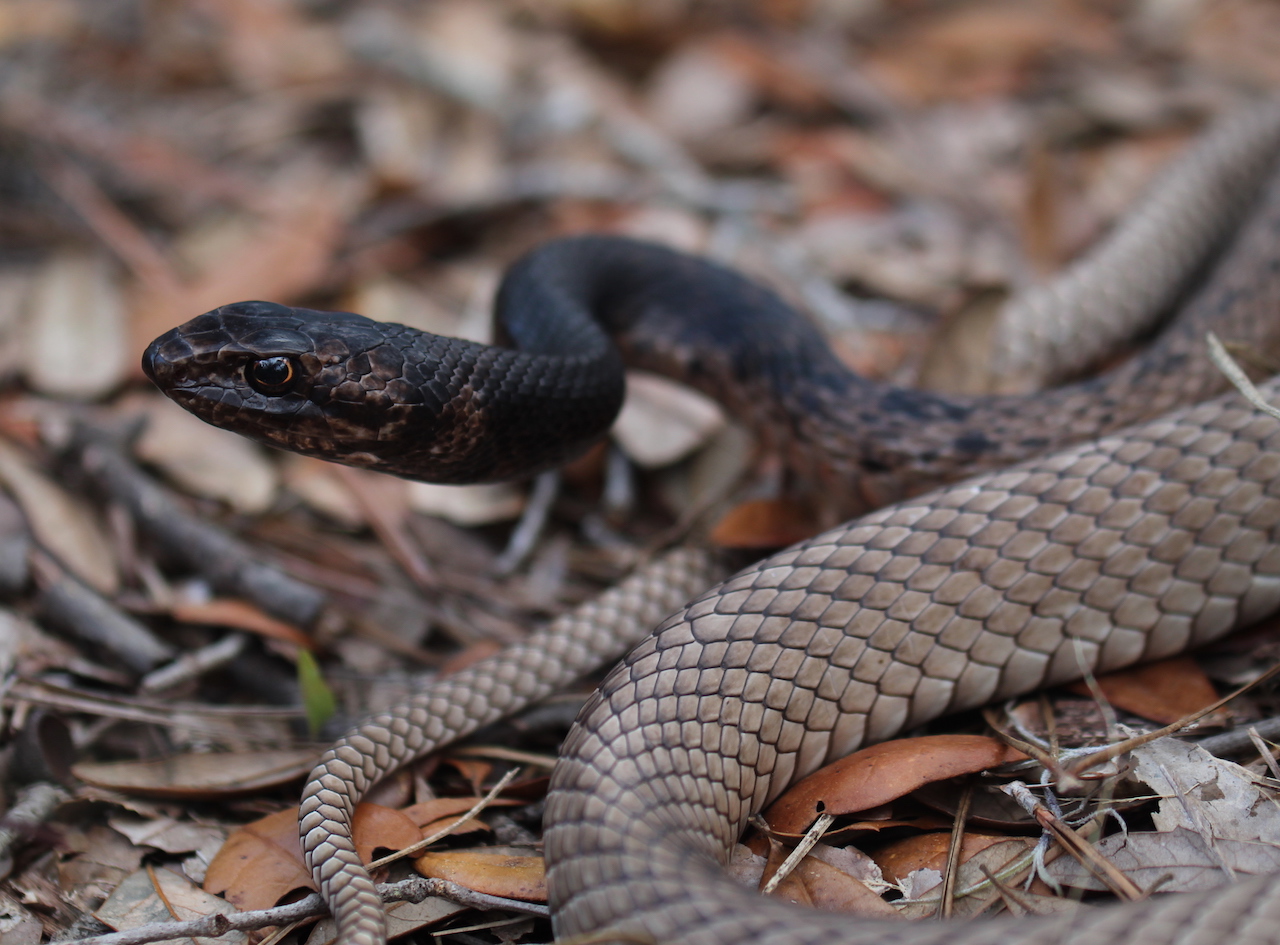
The scales on this snake are very cool and clearly show their resemblance to a whip.
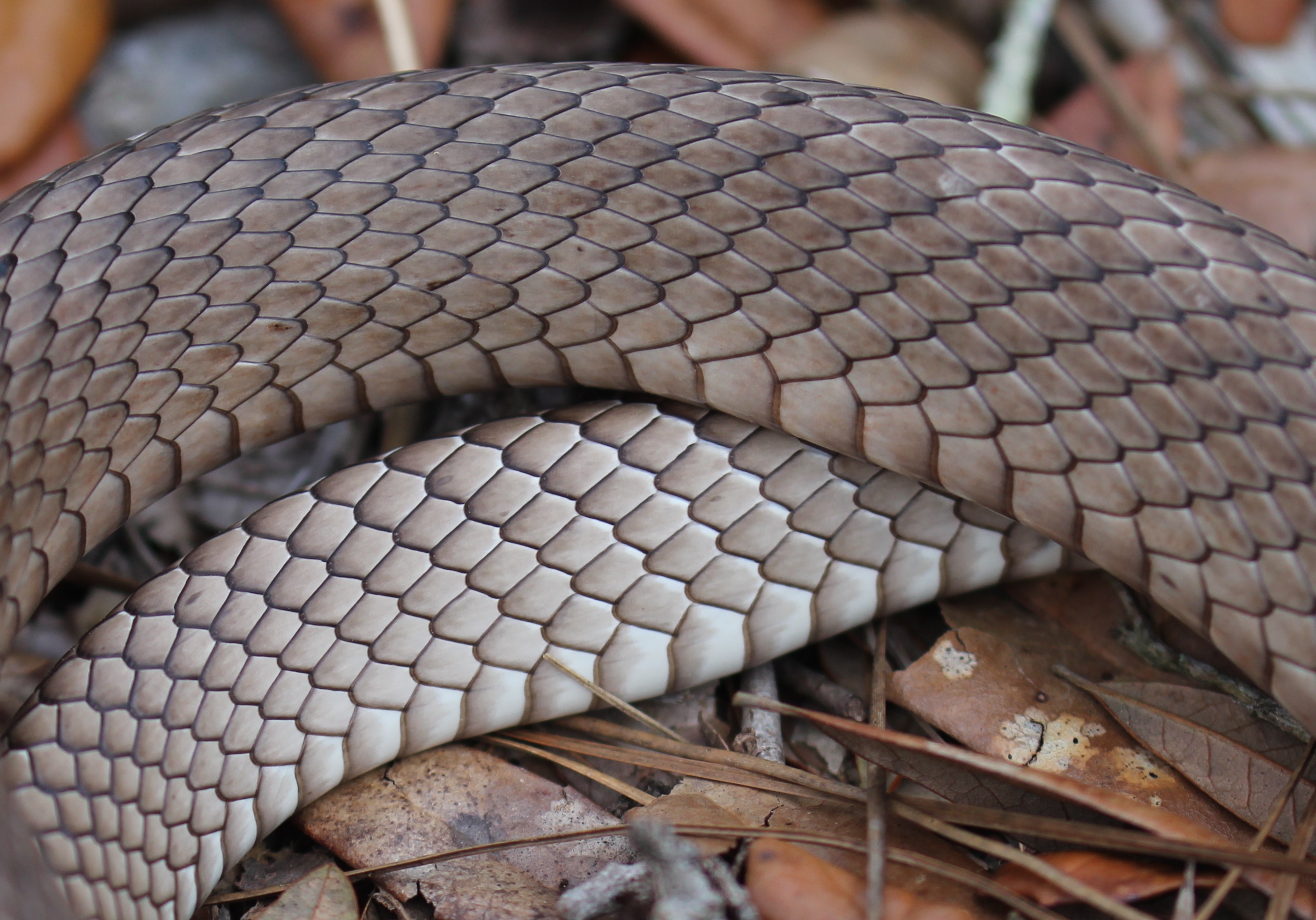
February 18 (Day 21)
Back up north, the weather had not ceased to be cold. After an unproductive day of flipping, we went elsewhere. Further east at the swamps we decided to look for canebreaks. While there we were also looking for more fossorial snakes and those seemed to be the highlight of the trip. The first snake was a scarlet king, but the same log had a corn so I will start with the corn.

It was an amazing juvenile. One of two corns seen that day but the other one was not photographed. However the trip was made as we happened to see four scarlet kings that same day!
The first was very similar to the one seen on the crawl the other night. Very white bands.

The fascinating part of it was the aberrance present by the white band that did not connect.

The second had the most black of any we had seen.
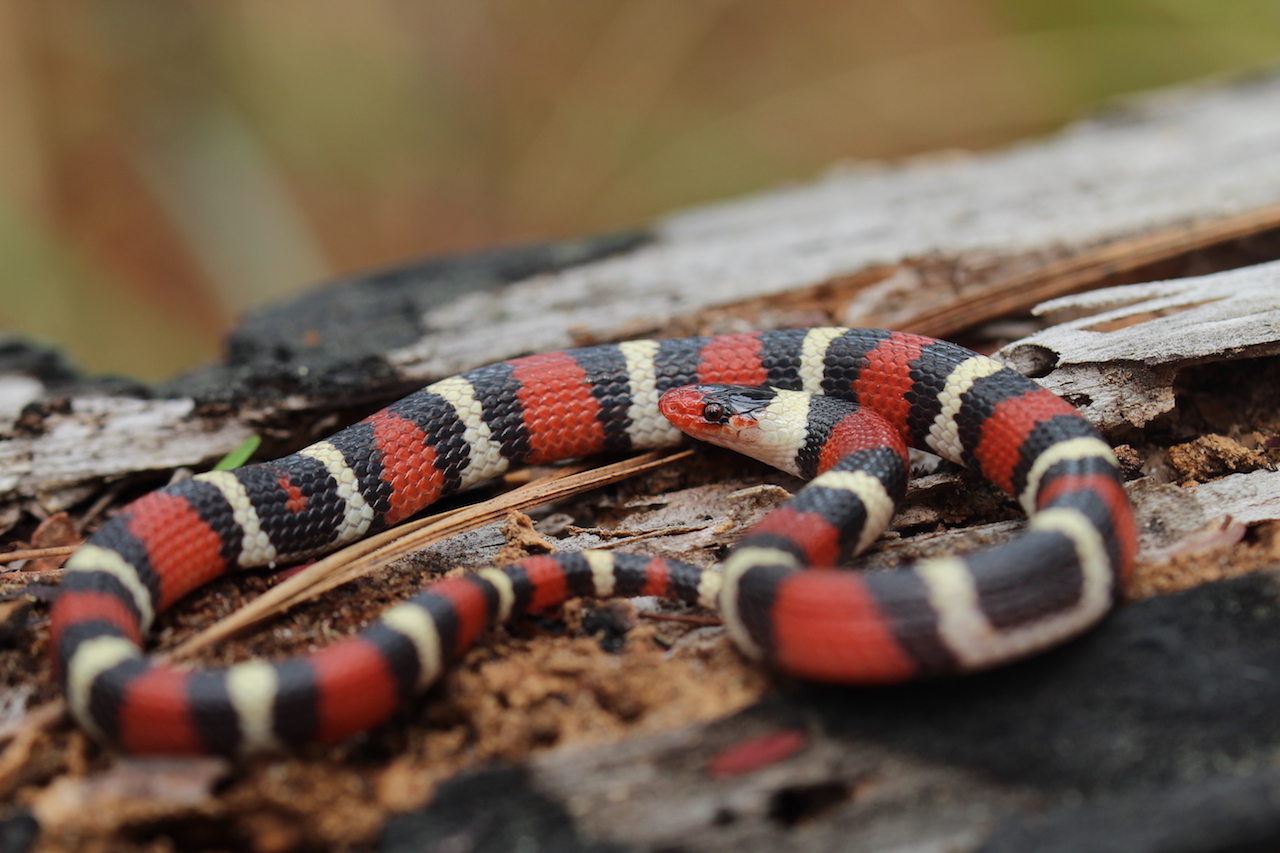
It had two aberrances as there was one stretch where two white bands connected along the underside of the snake. There was another side towards the back where there was almost no red in a part of the pattern and all that was left was a dot.
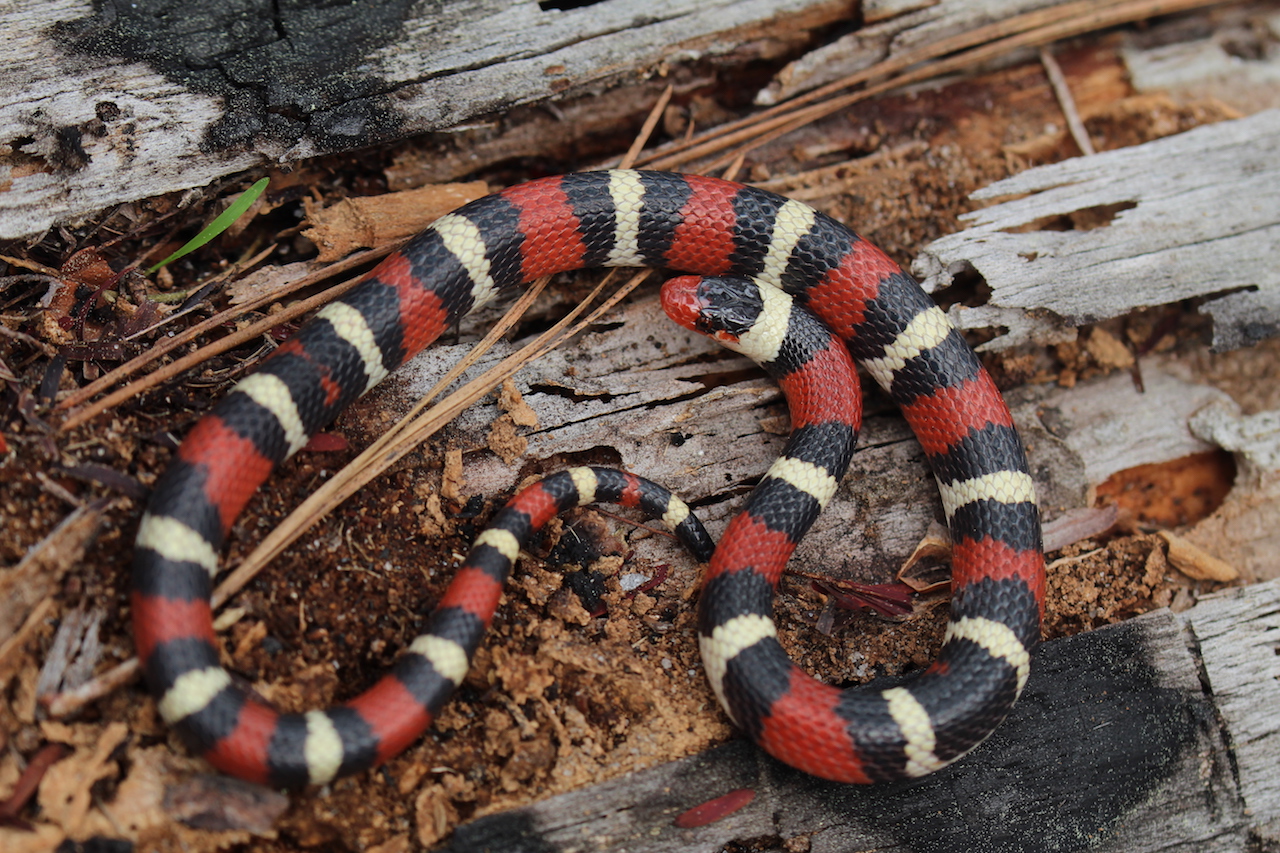
The third and fourth were found at the same time!
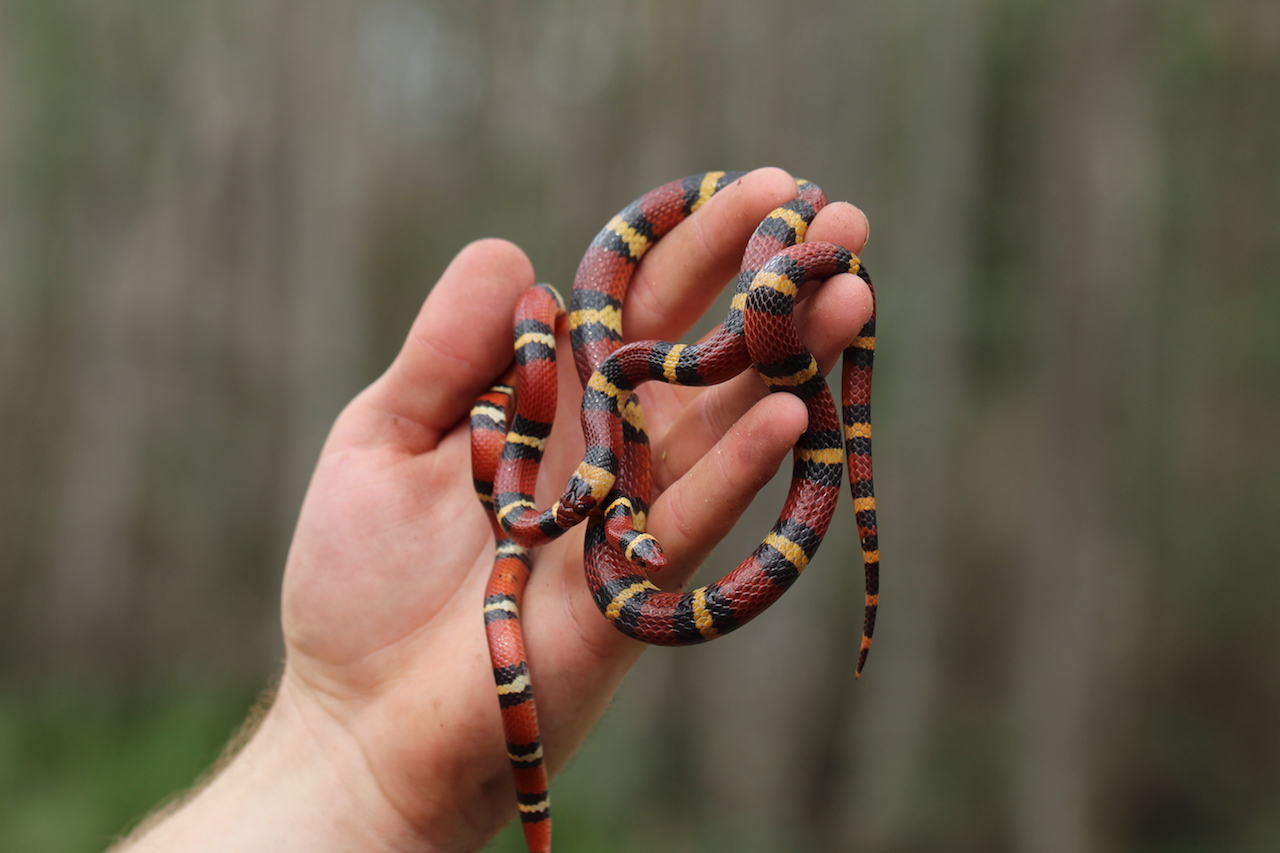
The third one had more yellow cream white bands.
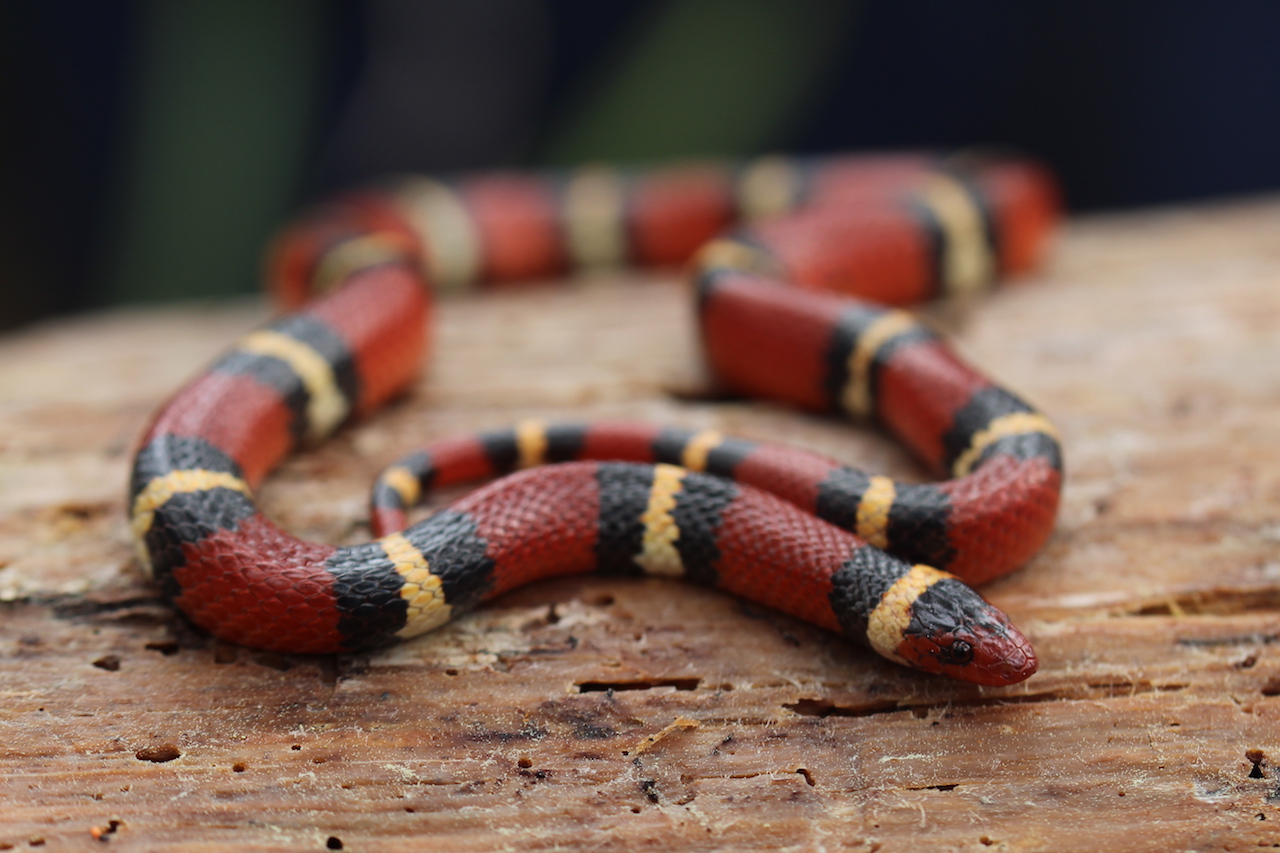
It had very nice band spacing and a zig zag pattern in the cream bands.

The last one was the biggest scarlet king I had ever seen. It was duller than the third but retained the yellow bands and a dark maroon color.
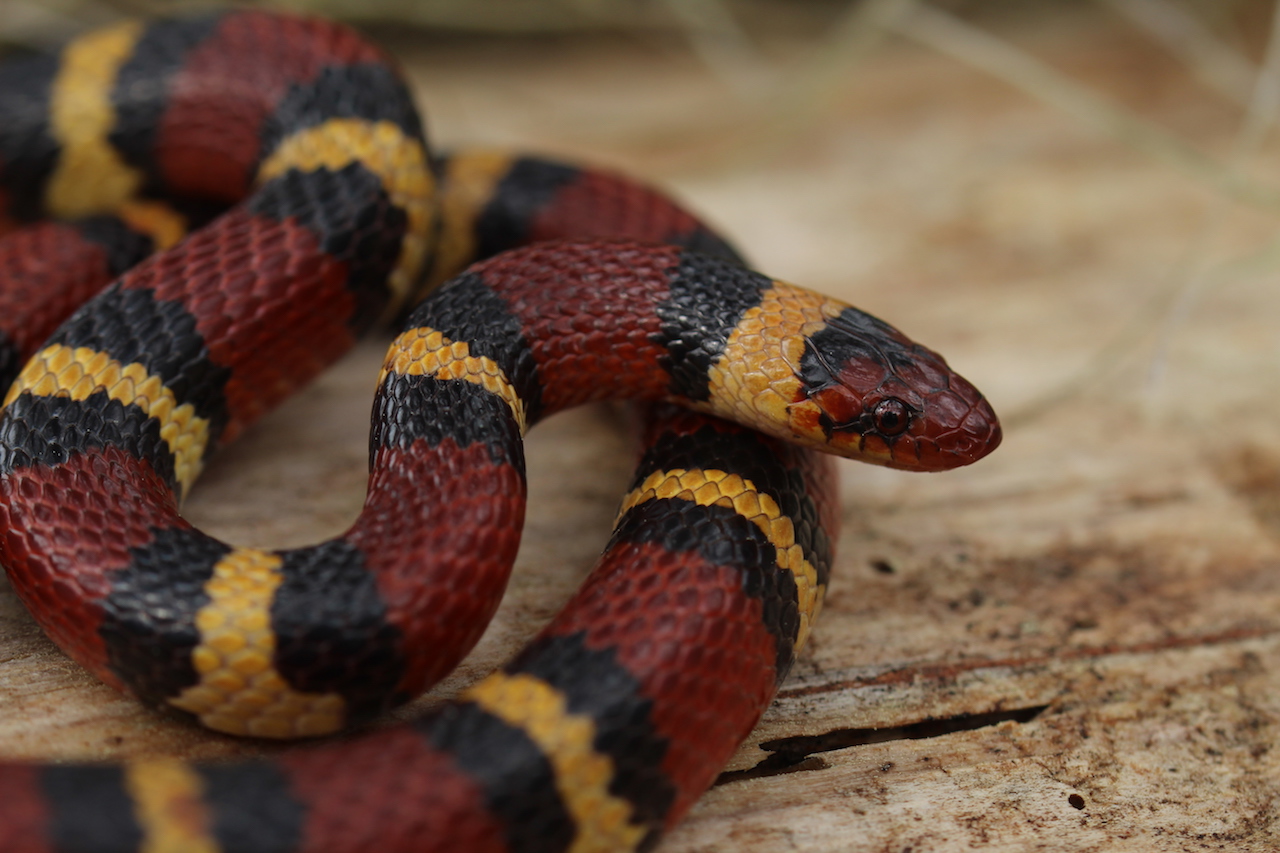
It honestly looked quite similar to the third one, just bigger and duller.
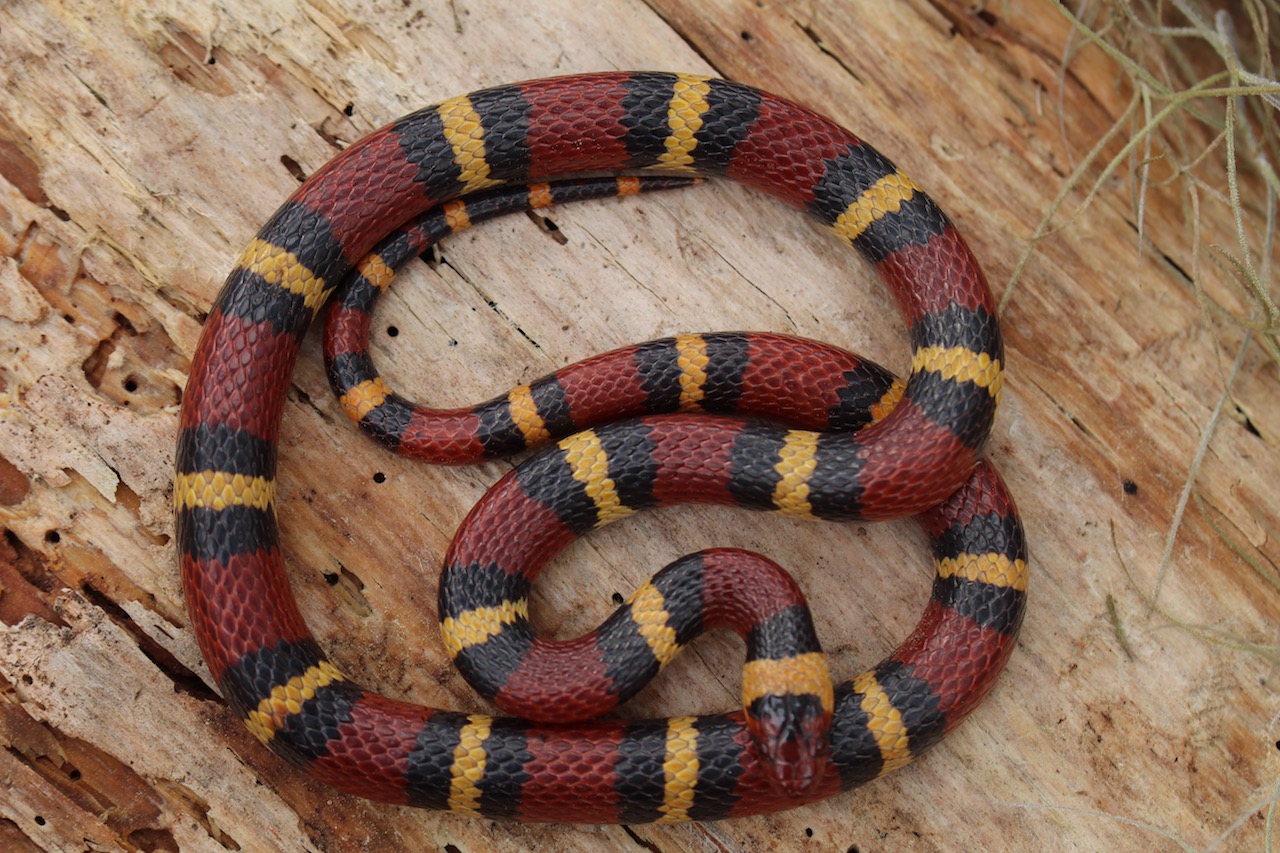
February 20 (Day 23)
As we left Georgia, we took one last stop in the sand hills of North Carolina. The only salamander seen was what we believe to be a juvenile sand hills salamander.
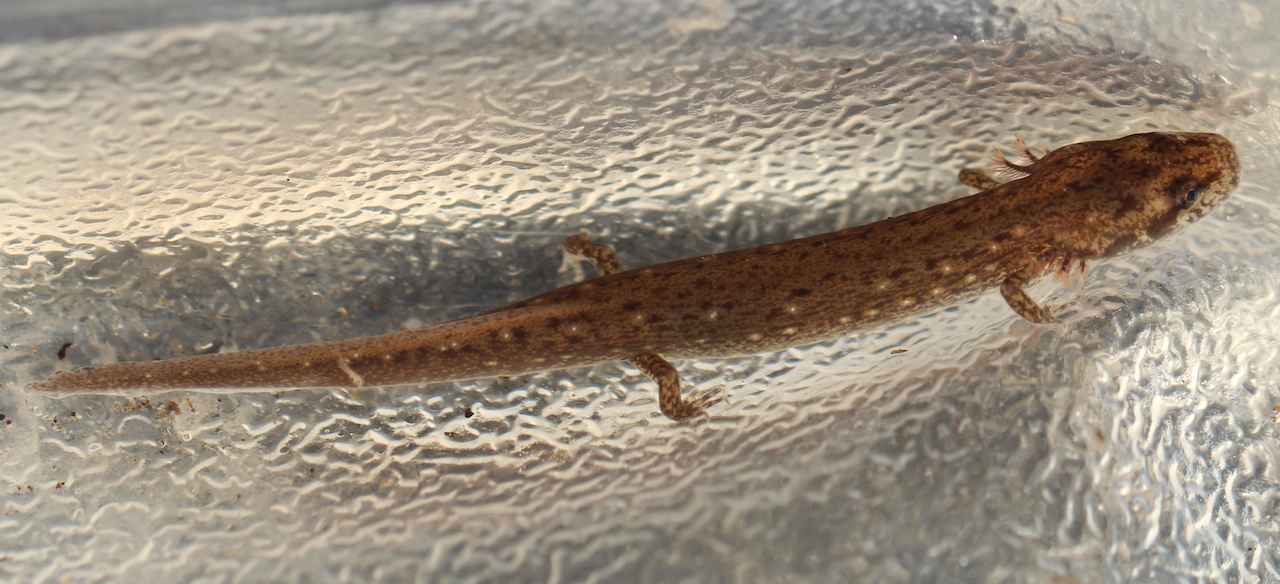
I love the aquatic characteristics. The paddle-like tail and the external gills. External gills remain one of the coolest things I have seen on this trip.
To our surprise, even in the cooler weather with below freezing temperatures the night before, we found our last snake of the trip. Curled up in a decaying log we found an eastern worm snake.
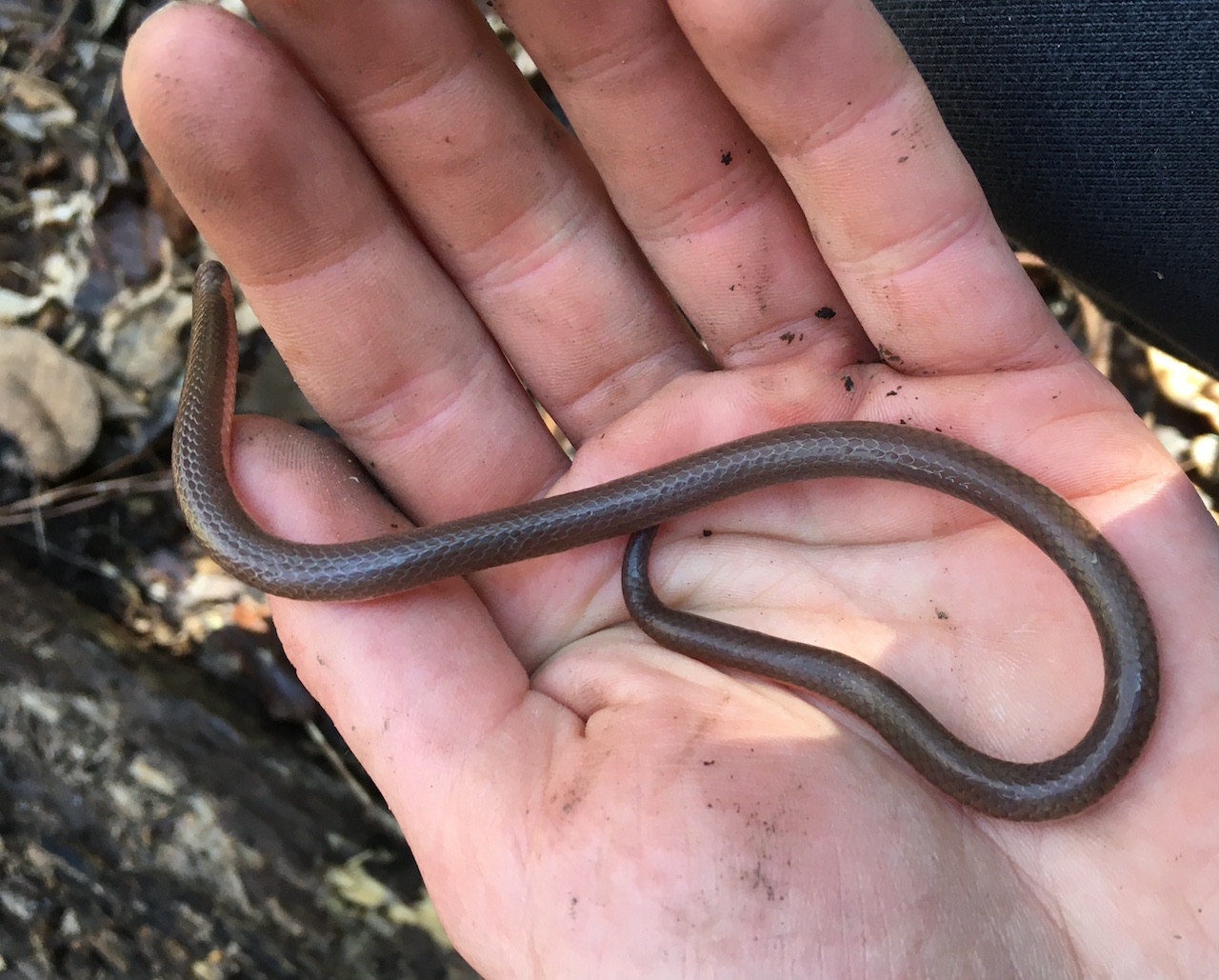
Because of all the cool things found this trip, it lets me do some fun comparisons! The first is a comparison of all the scarlet kings to show how variable they are.
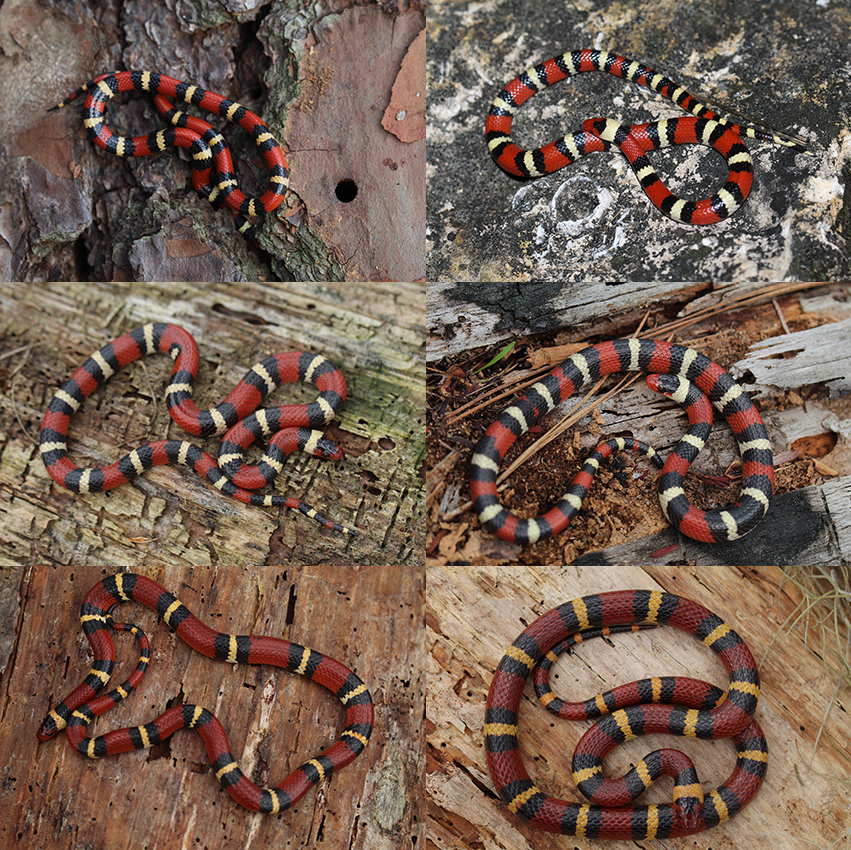
The second is comparing coral snakes with what they are often mistaken for,scarlet kings.

Lastly, I’ve compiled all my scale shots.
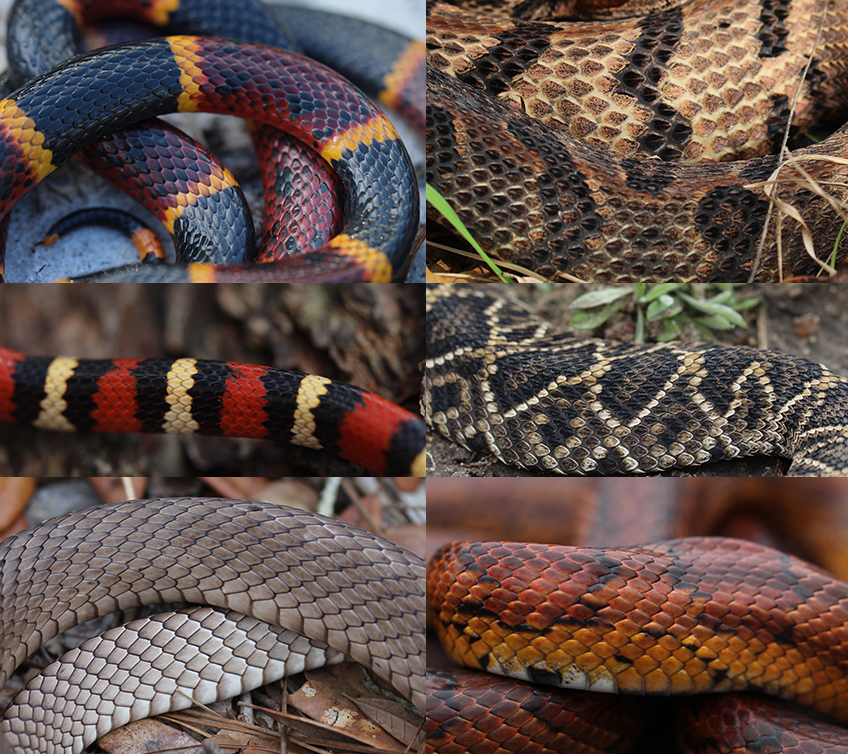
Snake Recap:
13 Corn Snake, 7 Scarlet Kingsnakes, 4 Black Racer, 3 Florida Green Watersnake, 2 Yellow Ratsnake, 2 Peninsula (Southern) Ribbon Snake, 2 Eastern Gartersnake, 2 Brown Watersnake, 2 Banded Watersnake, 2 Eastern Diamond-backed Rattlesnake, 1 Eastern Hognose, 1 Cottonmouth, 1 Canebreak Rattlesnake (Timber), 1 Striped Glossy Snake, 1 Southern Ring-neck snake, 1 Brahimny Blindsnake, 1 Florida Brownsnake, 1 Eastern Coral Snake, 1 Eastern Coachwhip, and 1 Eastern Wormsnake.
49 snakes, 20 species, and 13 lifers
Salamander Recap:
4 Lesser Sirens 4 Carolina Sand Hills Salamanders 3 Ocmulgee Slimy Salamanders 2 Southern Dusky Salamanders 2 Broken Striped Newts 1 Mud Salamander
16 salamanders, 6 species, and 6 lifers
In addition, there were a plethora of lizards, anoles, geckos, frogs, toads, turtles, and alligators with the only photos taken of a eastern fence lizard, eastern spadefoot toad, southern box turtle and an alligator.
Great trip, need to come back out to see more soon!